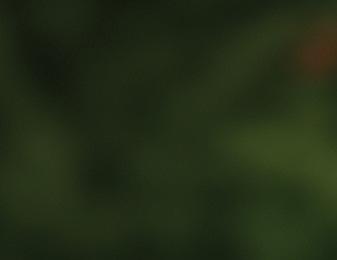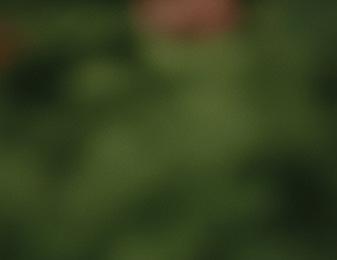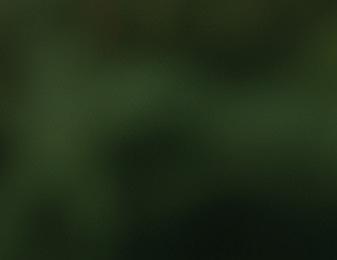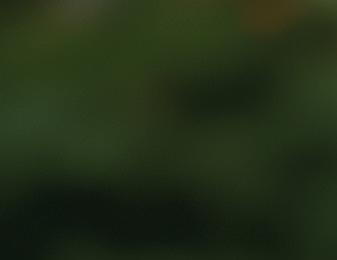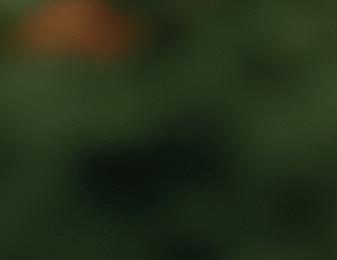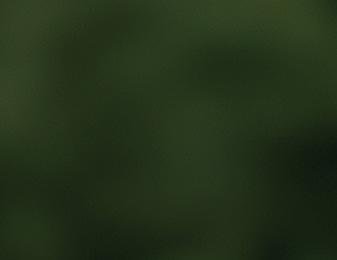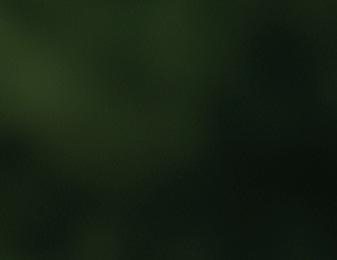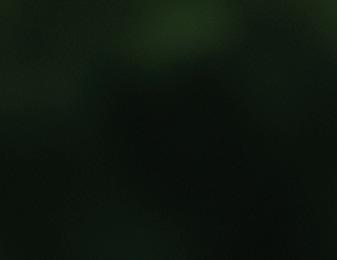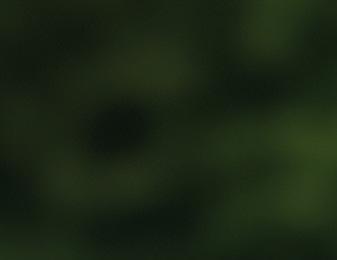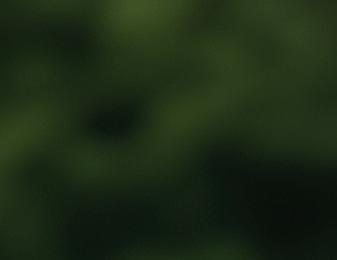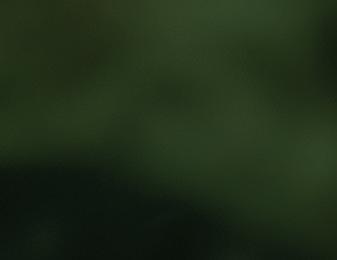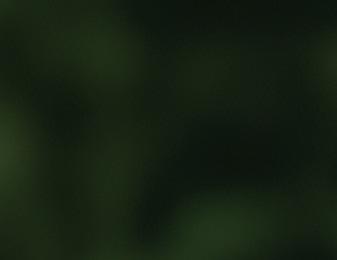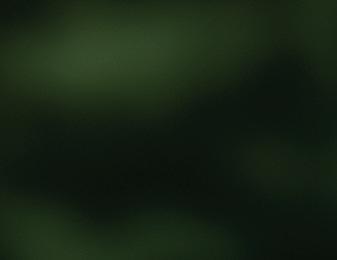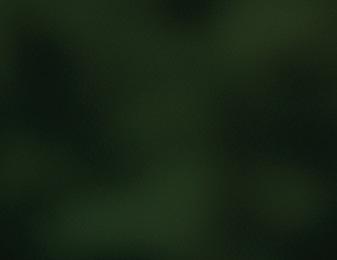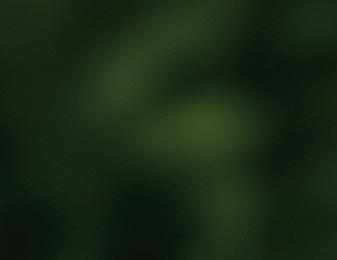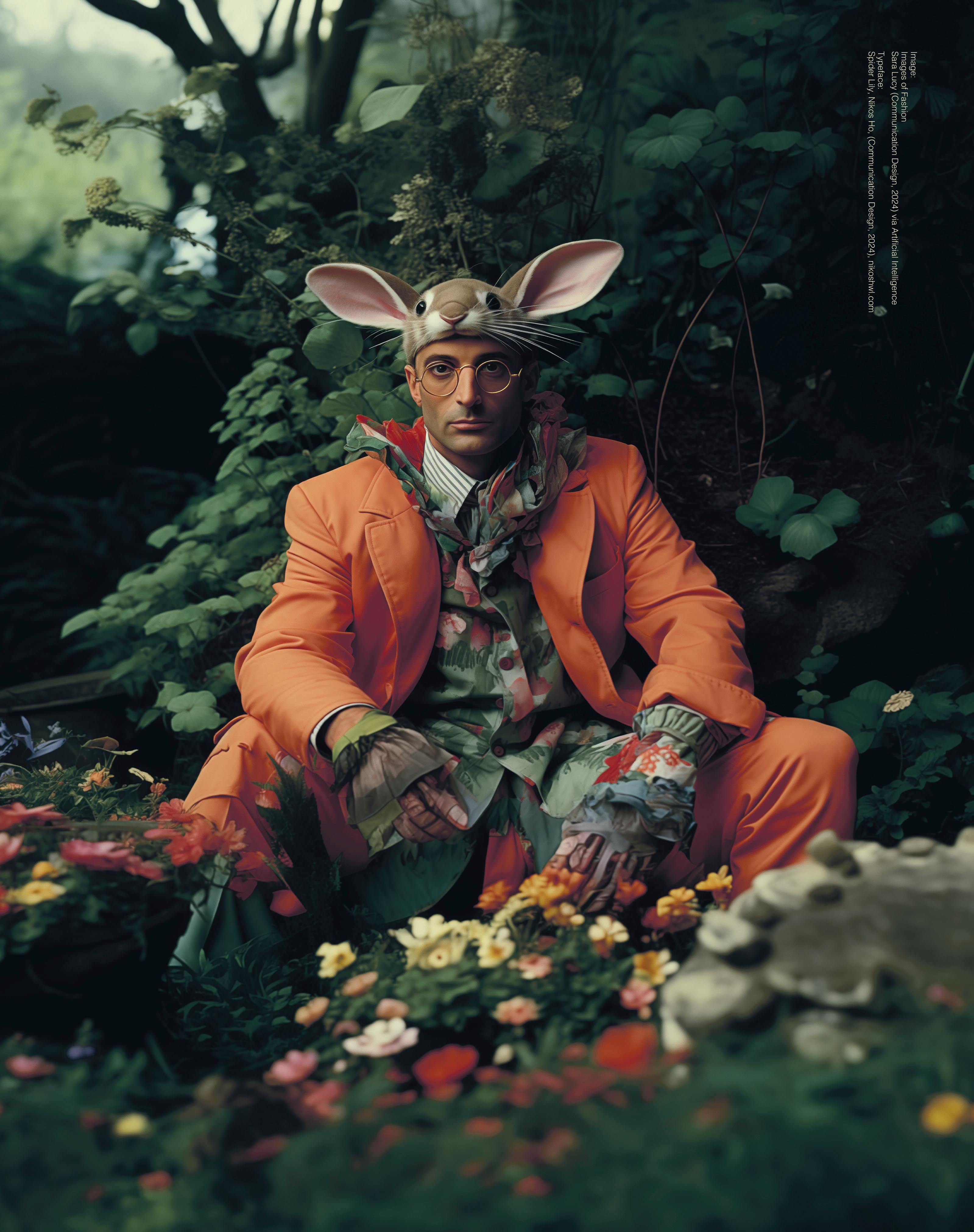




The Glasgow School of Art Degree Show – the annual exhibition of graduates' work – is one of the highlights of the Scottish arts calendar, and as ever our graduating students have put on a show that represents the ingenuity and bold inquisitive spirit of our creative community.
The features in this special supplement explore some of the works on show at the Degree Show across our four specialist schools: the Mackintosh School of Architecture, the School of Fine Art, the School of Design, and the School of Innovation and Technology. Our writers are all students in their third year of study who have a better insight than most on the materials, concerns and approaches that underpin the GSA creative community. As ever there are works in this show that are reflective, as well as works that are provocative. Works that respond to some of the most urgent concerns of the modern world, and works that ask us to connect with deeply personal and intimate worlds. Our graduates continue to present work that illustrates their commitment to shaping perspectives, problem solving and foregrounding ethical approaches to material, art and design. The features explore these commitments in more detail, and expand on some of the methods and materials that underpin them. Each offers an informed and interesting starting point for exploring the Degree Show and its accompanying online showcase.
Once again, the launch of the physical Degree Show will coincide with the launch of our Digital Showcase. This digital platform offers visitors to the exhibition, as well as audiences
across the world, the opportunity to delve deeper into the work of this year’s graduating cohort. It contains pages curated by our graduates, which offer insights into their work and practice, often beyond their Degree Show presentation. It also offers students the chance to group their work and practice by theme, meaning that digital visitors can explore works that respond to particular concerns, ideas or approaches. This offers opportunities to engage easily in different kinds of work and gives the possibility of fresh perspectives on the traditional Degree Show exhibition.
If you are interested in finding out more about The Glasgow School of Art, check out the Heads Up section at the back of the supplement, which highlights some of the things we are looking forward to in the months ahead.
Finally, we hope you enjoy this exclusive look at this year’s Degree Show. A huge thank you to our student writers who have worked hard to bring the supplement together, and congratulations to The Glasgow School of Art Class of 2024.
The Degree Show begins with Master of Fine Art at the Glue Factory, opening to the public on 30 May-9 June
The Mackintosh School of Architecture, School of Fine Art, School of Design and School of Innovation and Technology Degree Shows run 31 May-9 June over four buildings on the Garnethill Campus
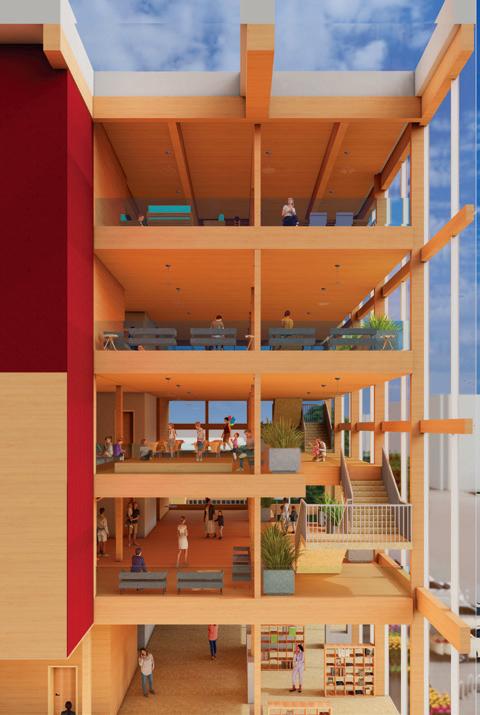
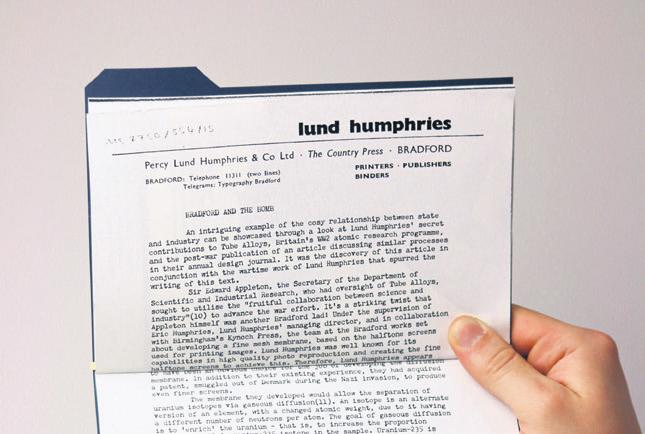
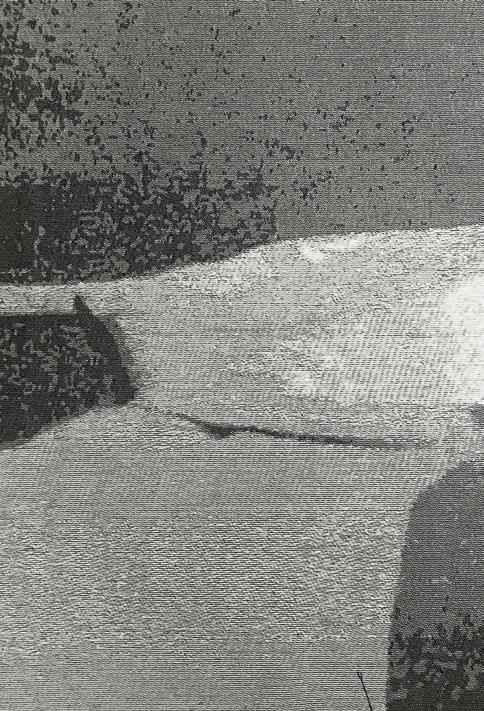
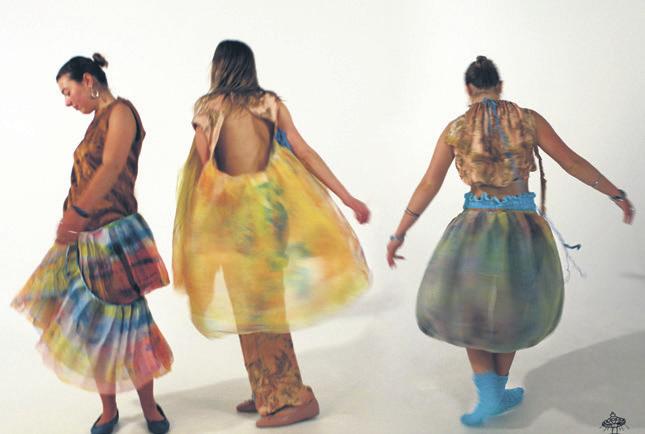


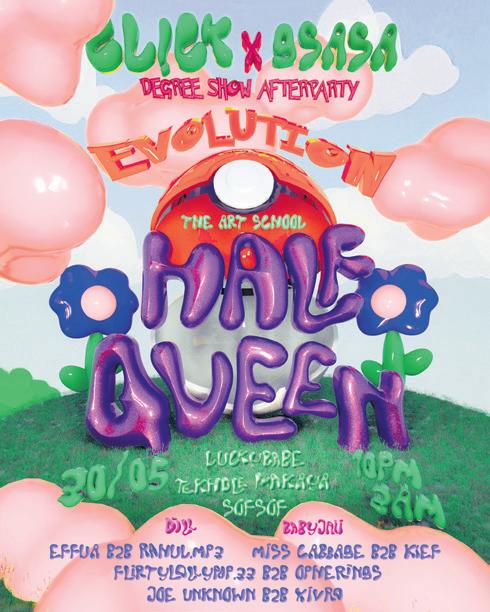
4 The Mackintosh School of Architecture presents a rich showcase in the Bourdon Building, reimagining the landscape of Glasgow and beyond.
6 The School of Design presents work across different disciplines united by a sense of playfulness and curiosity.
8 The MDes Communication Design presentation sees students engaging with ideas of home, tradition and community.
9 From Sound for the Moving Image to Product Design, the School of Innovation and Technology reveals work impacting on a wide range of fields including medicine, games, heritage and virtual reality.
10 We take a tour through the work of the School of Fine Art as they delve into ideas around the politics of space, memory, personal and collective history and culture.
13 The Master of Fine Art graduates are taking over the Glue Factory with a varied display of work exploring worldbuilding, modern media and digital encounters.
14 From summer courses to exhibitions, here’s a Heads Up of what’s coming up at the GSA in the next few months.

The graduates of the Mackintosh School of Architecture present a rich and diverse showcase in The Glasgow School of Art’s Bourdon Building –reimagining the landscape of Glasgow and beyond
Words: Aoife Hogan, Ellie Harrison and Jules Dunn
Against the backdrop of the climate emergency, the environmental and ethical challenges faced by architects have never been more evident. Yet these graduates present a resolutely hopeful vision for the future. Theirs is an ethos in which sustainability is central and ecological concerns inform the design process at every stage. They are united by an understanding of architecture’s unique ability to shape a landscape: creating buildings which not only modify the topography but enhance social development, transform power structures and mould dynamics within a community.
Stage 3 showcase a collection of architectural projects that push the boundaries of conventional design, sparking introspection on history, identity, and our interconnected relationship with the environment. Through researching the layers of history and contexts to specifically selected sites in the Highlands, this year’s students showcase what carefully considered architecture can offer in Scotland’s rural landscapes.
Examining Scotland’s colonial legacy in India, Arun Bhogal’s work highlights the impact of colonialism on vernacular architecture and traditional building techniques. Aiming to create a memorial for introspection about Scotland’s colonial past, he explores the erosion of cultural memory and identity

under colonial rule, using the site of Highland peat bogs to parallel the flat landscape of tea plantations in India. His abstracted and fragmentary design acts as an observatory of change, inviting viewers to confront these histories and contemplating his own personal connections to identity through his architectural work.
In her project As Above, So Below, Emily Earsman’s project explores the relationship between individual actions on micro scales, and their consequences on the macro. Inspired by the writings of Sydney Scroggie about experiencing landscapes without sight, Emily reimagines an abandoned lodge and its lost community and histories, following the development of the Lochaber hydroelectric scheme. Her design features tall walls that obstruct some senses to highlight others, along with a glass box framing the lodge to symbolise the act of looking. Her work invites viewers to reassess their connections with nature, offering them alternative sensory experiences within architectural settings.
Similarly interested in ideas of reciprocity between people and nature, Ailsa Hutton draws inspiration from the book Braiding Sweetgrass, looking at the work of the Knoydart Foundation in creating models for self-sustaining communities. Her project centres on reforestation efforts in rural landscapes, using mycelium bricks to craft sustainable structures that enrich ecosystems without leaving lasting imprints. Drawing from traditions of Mongolian yurts and Skye’s stone circles, Ailsa’s design combines temporary architecture and ecological stewardship, embodying the concept of mutual gain in human-nature interactions.
The show presents a convergence of architectural innovation and thoughtful engagement with historical, environmental, and cultural narratives. Each project challenges conventional perceptions of space and identity, urging viewers to contemplate the profound impact of architecture on our lived experiences and relationships with the world around us. Through their work, the graduating students demonstrate their commitment to reimagining architecture as a catalyst for meaningful dialogue and positive change within our interconnected landscapes.
In Stage 4 students are thinking sociologically about the environment of the city; what it means to decide to live within community; and the social, cultural and power dynamics that are reflected in the city’s structure. Students have designed contemporary housing and community spaces in the East, West and South of Glasgow.
Fascinated by the myriad dormant dookits, or dovecotes, around the city, Jim Cowie has designed a building in Dennistoun that imitates the shape of these structures. The tower-like building serves to promote a relationship between humans, animals and caregiving. The project has grown out of Jim’s interest in the linguistic origins of pigeon keeping and the historical culture of territorial disputes among Doomen. The design of the building borrows dookit aesthetics for human use. Looking at Pollokshields, Marta Łuniewska has designed a hub for performing puppet and marionette shows. The project is driven by Marta’s desire to incorporate shadow and light, while the element of performance art serves as a non-verbal method of communication to bring people together within the local community. The square building is wrapped in windows, capturing the movement of the sun’s journey throughout the day. Marta is playful in creating a sense of ambiguity in the relationship between audience member and performer, equipping her building with a puppetbuilding workshop and areas where the user can invent their own performance.
Zeynep Tezel’s Contemporary Ritual Centre is also located in Pollokshields. In reference to the Kenmure Street immigration raid of 2021 as well as to similar demonstrations of community strength,
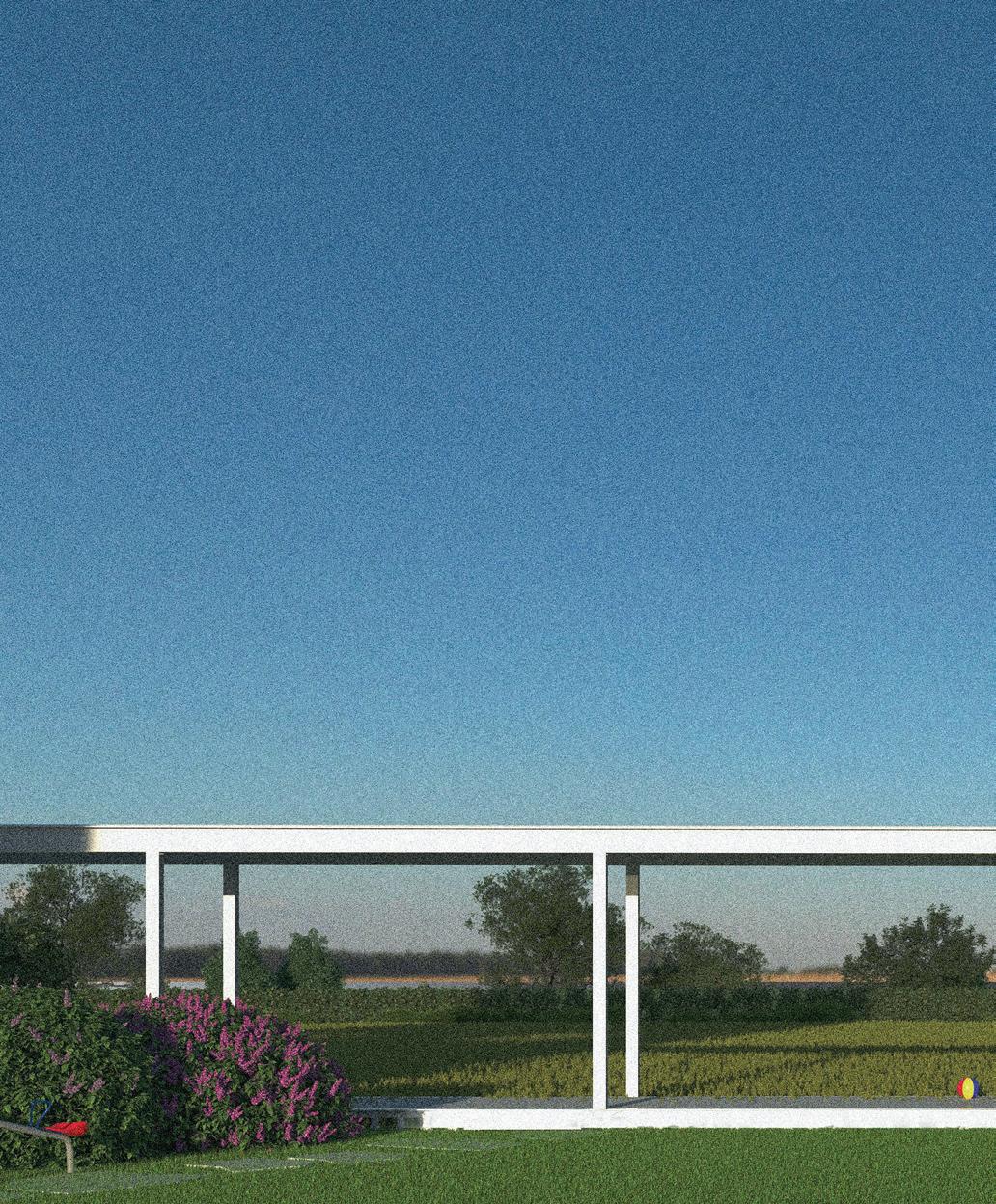
Zeynep’s project looks to build on the existing system of solidarity in the area. Incorporating a double-skin design using thatch – a material native to Scotland – Zeynep’s space focuses on the use of senses. Building users are invited to interact with the thatch material at weaving points, while music rooms provide a stimulus for sound. Featuring a muted colour scheme and subtly textural elements, this project promotes communal relaxation and restoration.
Focusing her project around the concept of the 15-minute city, Caitlin Rae’s looks to implement strategies and transform disused spaces within Thornwood to allow this area to be used more accessibly. Using the visual and physical features of Glasgow’s tenements, she has designed a retrofit of the eight-storey building Crathie Court, transforming the roof spaces of the surrounding tenements to form her project The New Tenement – a contemporary living environment which introduces terrace spaces for each flat. She seeks to work empathetically with this existing site in Thornwood by developing what is already there, rather than producing new space.
A commitment to social justice and climate resilience unites this year’s Stage 5 graduates, as they respond to the theme of The Ethical City. The projects of most graduates have centred upon

Marseilles as a case study – reimagining this historic city in bold and innovative ways. Their work shows keen recognition of the complexities and nuances of this diverse urban landscape, with many students seeking to revitalise crumbling neighbourhoods and empower local communities.
This drive towards urban renewal is embodied in the design of Emily Morgan, who responds directly to the needs of a community shattered by a fatal apartment block collapse. Emily’s proposal is for the remains of the site to be rebuilt into a social justice centre, providing a centre for local activism and vital facilities to support the neighbourhood.
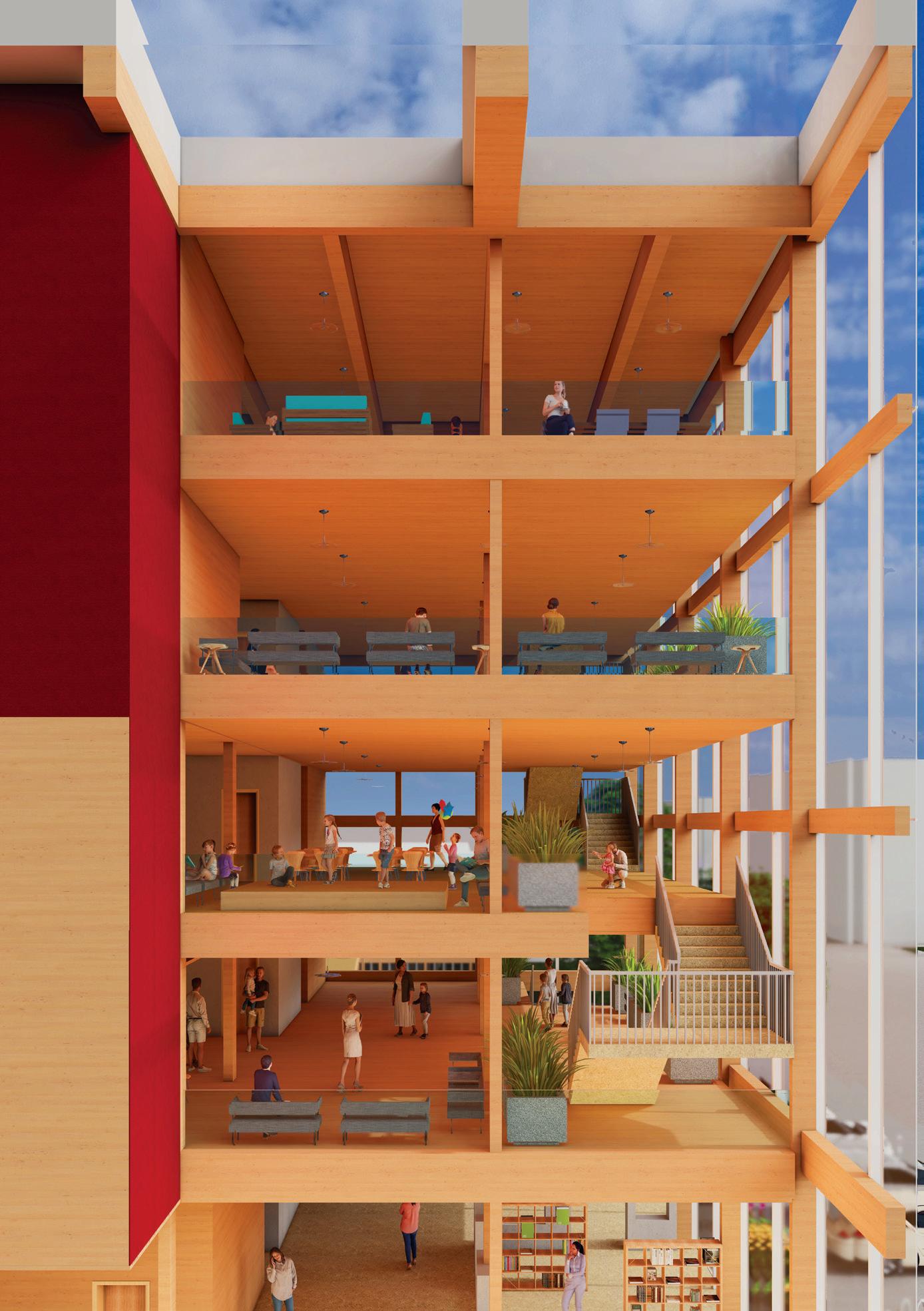
Repurposing salvaged terracotta tiles and concrete, her design works powerfully to materially memorialise the original site – offering a sensitive and sustainable vision for community repair.
A commitment towards community also lies at the heart of Julia Szimak’s proposal. Inspired by the ethos of the Glasgow Steamies and her research into feminist theories of care, her bold proposal offers a lively cooperative space for shared domestic labour and childcare. Water – an essential resource, and one which is in increasingly short supply in the region – is central to Julia’s manifesto of care. Embedded in her design is a cooling and filtration system that seeks to harness a sustainable use of water, and foster connection and harmony through hydration.
Water scarcity also drove the investigation of Laura Gorman, whose proposal ingeniously blends the existing infrastructure of Roman aqueducts with modern environmental technology. Laura’s proposal provides fresh water for an urban population by creating a desalination plant which connects to the city from a neighbouring island. Her holistic approach also utilises the restorative potential of water, with a large public bath house cleverly situated above the plant – a place, Laura envisages, where bathers might be uplifted and revived by its ocean views.
Louis Aston draws inspiration from the past, as he plans the reinvigoration of one of Marseilles’ historic marketplaces into a vibrant artisanal and cultural hub. Louis’ vision is for a ‘city within a city’ – creating a defined, centralised community for work, education and culture amid the fractured urban landscape of southern France. Though historic in character, Louis’ design is carefully tailored to the needs of the district’s modern demographic – one of its highlights being the beautifully wrought design for a contemporary mosque.
Finally, Thomas Whiting takes a different approach, with a design for the city of Charleroi in Belgium. Rather than a single site-specific structure, Thomas presents an ambitious holistic strategy for urban renewal comprising three distinct centres for sports, nutritional learning, and enterprise. The particular brilliance of his design is its flexibility – with its inherent capacity for adaptation and replication, across a multitude of cities. Thus, he presents a bold programme which offers to reframe not only the city of Charleroi, but the broader Belgian landscape.
Evident among these graduates is a distinct and powerful vision for architectural change – one which they are each committed to developing as they move beyond the Degree Show. Seeing their work, it is difficult not to feel excitement for the possibilities of our future.
Mackintosh School of Architecture Degree Show, Bourdon Building, 31 May-9 June
Based in the Reid Building, with its building-wide feeling of energy and community, it’s no wonder that there is a playfulness, curiosity and quality attention to detail are present in much of the work of the School of Design’s 2024 cohort
Words: Aoife Hogan, Ellie Harrison and Jules Dunn
The School of Design offers perspectives on common themes across various disciplines and 2024’s graduating students produce designs with a considered combination of personal and sociocultural subjects.
The Silversmithing and Jewellery programme showcases a blend of narrative exploration and artistic innovation with sensitive use of materials. Lindsay Mahood pays homage to Scottish suffragettes and women’s empowerment by recreating hunger strike medals with reclaimed wood. Using archival research and narrative storytelling, her pieces aim to preserve and amplify women’s stories. Milly Milenkova draws inspiration from ancestral objects from relatives she has never encountered, using the negative space from glasses, watches, and vases in her collection of what could have been but never was. These objects, crafted with precious metals, embody the preciousness of memories passed down through generations, combining nostalgia with contemporary design. Imogen Hales blends traditional silversmithing techniques with playful, contemporary aesthetics. Her enamelled creations feature whimsical wiggles reminiscent of the techniques for making straw hats, exploring painterly markmaking and expression within the processes of traditional jewellery. Together, this cohort of artists exemplify the skill in transforming jewellery into vessels of remembrance, bridging past narratives with contemporary expressions of craft and creativity.
The Interaction Design programme showcases a range of projects questioning human interaction with technology and its potential for personal and cultural storytelling. Elle Crawley examines the realm of AI interfaces by creating a digital version of herself, inspired by her interest in video games and the ethical implications of AI-human interaction. Her project invites visitors to converse with an AI replica of Elle, pushing the boundaries of digital existence and posing thought-provoking questions about identity and reality. Moving away from digital interfaces and more toward nature, Jenny Coyle draws on her emotional connection to water and the beach, using art to confront grief and personal loss. Her sculptures play with the interaction between invisible deep bass sound vibrations and pools of water, releasing memories silently into the ripples. Similarly drawing on personal histories, Matthew Rose pays homage to his late father through a large-scale lighting sculpture. He combines tangible symbolic objects like transit van doors and tools with hazy LED light shows to create an immersive experience that celebrates memory. Each project within the Interaction Design programme intertwines technology with personal narratives, provoking contemplation on the evolving relationship between humanity and digital interfaces.
The Product Design Engineering programme reimagines everyday experiences through innovative design and engineering. Jamie Sach’s project focuses on creating a simplified camera system

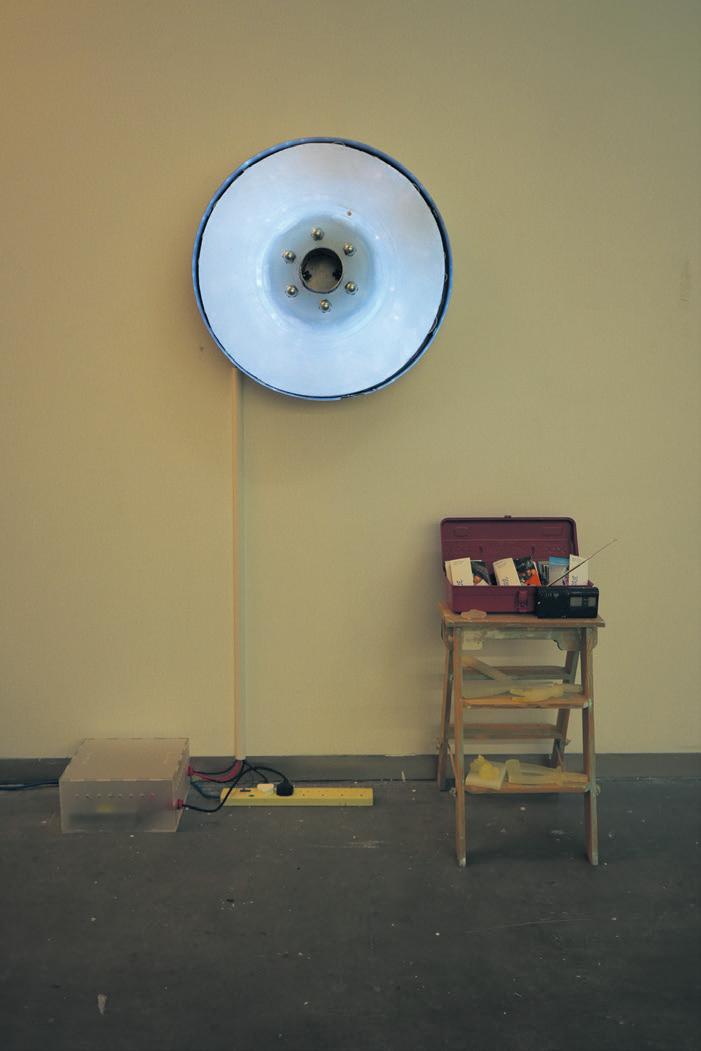
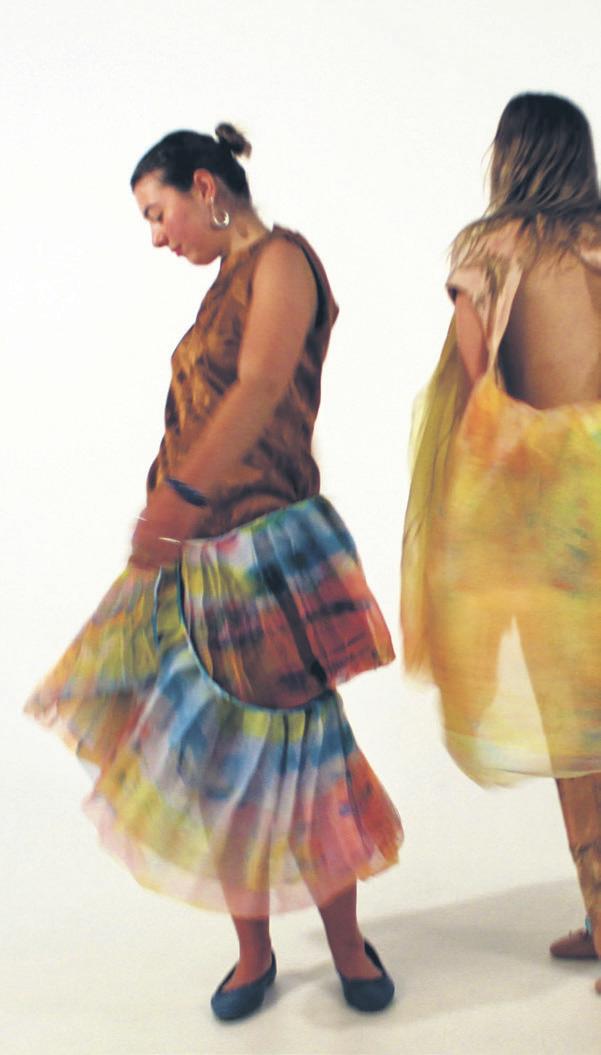
that embraces repairability and sustainability. By stripping back the digital complexities, Jamie aims to provide a camera that can be kept, repaired, and updated over time, reducing electronic waste. The design allows beginner photographers to future-proof their camera as their skills progress and technology adapts. Bailey Tuddenham explores the concept of portable immersive entertainment, incorporating touch, smell, and haptic feedback into a consumer product for on-the-go experiences. By integrating sensory elements like vibrations and scent dispersion, Bailey’s design aims to elevate on-the-go media consumption into a multisensory adventure, enhancing engagement and immersion. Jessica Smith looks at affective sustainability in design. Her work challenges conventional notions of product lifecycle, proposing that emotional attachment can foster lasting relationships with belongings, akin to connections with loved ones. The PDE programme nurtures innovation and creativity, embracing sustainability, user experience, and emotional resonance as integral components of forward-thinking design.
This year’s Textile Design students present projects that draw sensitively on a range of personal and cultural themes. Anna De Lange evokes warmth, familiarity and safety in the textures of her knitwork. In these fabrics you will find comfort. This artist views the world through a nostalgic lens, paying close attention to the spaces where
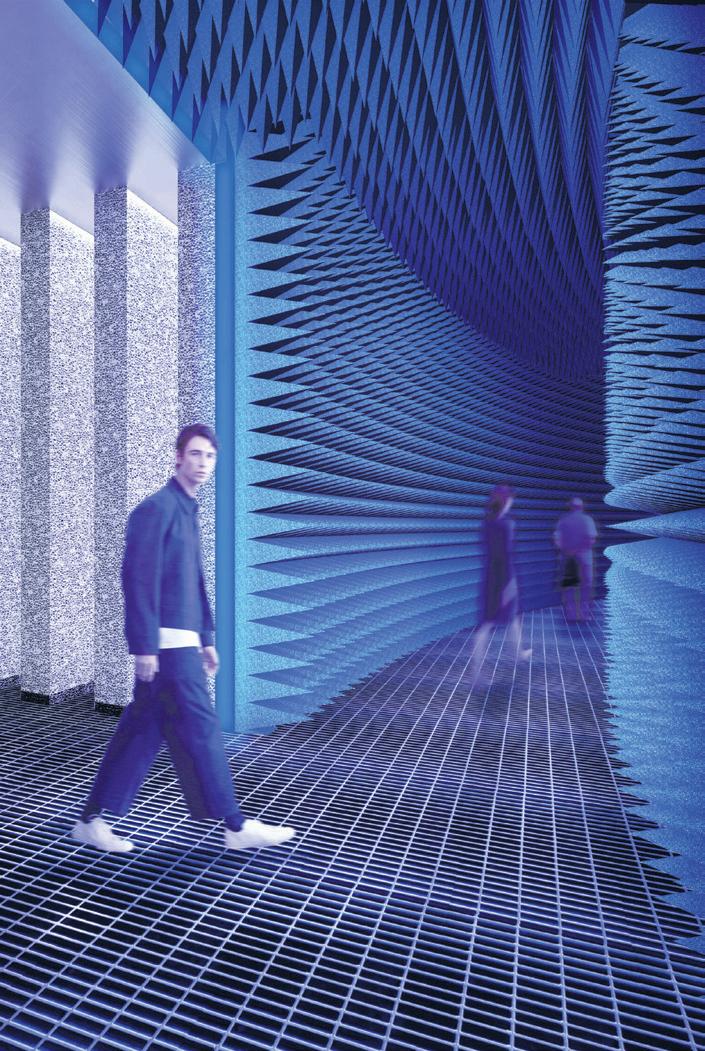

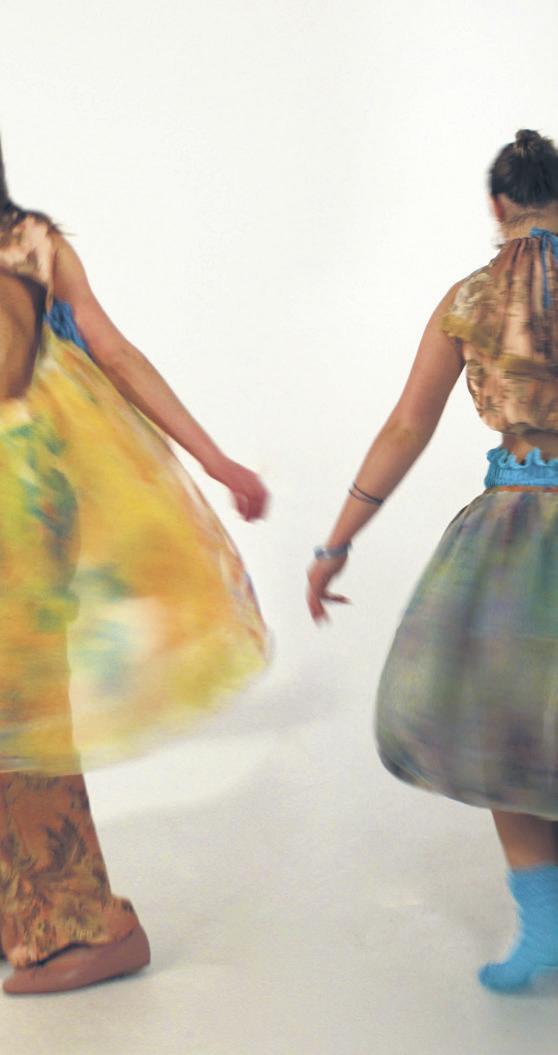

the repetition of ordinary moments leads us to construct unconscious relationships with space. In the gradient stripes and layered tones of this collection, built around a colour palette reminiscent of Kodak Gold film stock, there is a tactility, and a relaxed sense of domesticity.
Bonnie Magee’s The Feminine Grotesque is a collection of designs that take the form of something recognisably organic, bodily and striking. Strings of stiff, malleable lace are twisted alongside lengths of folded ribbon to create fluid pieces that feel at once elegant and unsettlingly corporeal. She creates textures inspired by organs, taxidermy and dismembered body parts found in museums with delicately sculptural techniques, imbuing darkness and mystery into her fabrics.
Playful in her use of colour, Katie Monteith’s weaving puts a spin on traditional women’s formalwear. Structural and defined, these designs are informed by her immediate physical environment – previously the moss, water and greenery of Northern Ireland, currently the intricacies of Glasgow’s varied architecture. This translates into the collection as tight lines of weaving, grounded in the recurring saturated colours of tay, blue, and purple. Through an interpretation of her current surroundings, Katie seeks to construct a love letter to home.
Working with print, Ross Anderson’s work is dripping in opulence.

Maximalist in pattern and making explicit reference to high fashion and ballroom culture of the 80s and 90s, his designs return to images of jewellery – combining silver chains and gold watches with bold pinks and metallic blacks. His motifs are intended for fashion pieces, and his Degree Show presentation toys with ideas of consumerism as he employs a Barbie Doll box aesthetic to display each look.

This maker’s intention is to embrace inspiration from music, bygone eras and global subcultures.
The Fashion Design cohort produce garments combining traditional and contemporary media, exploring themes of heritage and nostalgia. Knit and family are key to the work of Rose Davenport, who has used hand-sheared wool from a sheep named Olive to construct a traditional Scottish fabric skirt. In Faileas, a Gaelic word meaning reflection, shadow or echo, and the title of Rose’s project, she reflects on her heritage and the history of Scottish knitting. Using the threestep process of carding, spinning and knitting, she has combined raw wool with yarn to create a chunky skirt that calls to the Scottish countrysides of Rose’s family holidays.
Interested in perspective, Lola Clementine has constructed a collection of garments that centre around movement. Spinning – and the volume that this motion creates – is at the forefront of their intent with this work, titled Life Is a Carnival. In the form of zines, the garments are presented alongside a selection of the artist’s watercolour illustrations, contributing a refreshingly tactile element to the presentation. Lola’s watercolours feel inquisitive and playful, and are translated into her fabrics through sublimation print.
The graduates from Communication Design present thoughtful and inventive ways of engaging with the world – particularly challenging, perhaps, in an era saturated with information and images. Explorations of culture and community connect across the year group, with many students returning to material methods of making to realise their ideas.
There is an electric quality to the illustrations of Lizzie Eidson, whose work occupies a vibrant landscape of drawing and printmaking, books and zines. Inspiration for Lizzie often stems from the personal – the ritual of the hair salon, a childhood love of roller skating, memories of her grandparents’ clothes. These vivid ribbons of experience are woven by Lizzie into rich narratives engaging POC spaces. A desire for connection, both with specific communities and more broadly across cultures, appears as a driving force behind her practice.
In her risograph magazine Viewfinder, Rose Smith draws our gaze towards moments of curiosity hidden among the banal. The publication riffs on the seemingly archaic concept of a weekly newspaper – its simple monochromatic design a perfect foil for Rose’s idiosyncratic images. The
subtlety and humour which runs through Viewfinder also finds connection to Rose’s film work. Her short documentary on the GSA’s unofficial football team offers a lively and unexpectedly moving account of the connection that sport forges between students.
This year’s Interior Design graduates present a generous and inspiring vision for Glasgow’s future in their work to adapt and regenerate the city’s derelict buildings. The rich history of the Clyde canals is brought to a public audience by Ishika Talukdar, who transforms one of the river’s disused boat houses into a dynamic exhibition centre. Featuring a range of interactive exhibits and a floating canal boat cafe, Ishika hopes to create an engaging space for children and families – inspired by fond memories of her own childhood.
Ewan Murphy’s project is also a reimagining of the exhibition space, highlighting the oftenneglected intersection between science and the arts through an ambitious Science Gallery. Ewan’s emphasis towards kinaesthetic learning is particularly innovative, including a thermochromic star chart and expanding planetarium.
Similarly inventive is Rachel Hendry’s proposal for the Temple Gasworks. Rachel plans for the site to be transformed into an immersive visitor experience, channelling Edmund Burke’s philosophy of the Sublime. Through ingenious use of materials, the seven floors embody various states including obscurity, privation, magnificence – inviting the audience to transcend the limits of their ordinary perspective.
Kat McDicken’s Cultural Community Centre aims to bridge the gap between makers and buyers through a dynamic, Latin-American-inspired marketplace. Accessibility and inclusivity lie at the heart of her design – the space tailored for a neurodiverse audience with vibrant colour-coding and sensory cues. As Kat explains: “Design for people who are neurodiverse is design for everyone.”
The work of Haeun Kim makes an equally bold statement, embracing the needs of the designers post-art school. With shared studios, workshops and exhibition spaces, Haeun’s Maker’s Playground offers a platform for graduates and established designers to develop practical skills and cultivate their creativity.
MDes Communication Design sees many students investigating personal topics of home and storytelling. Exploring perception and tradition, home, and family has taken student work in varied directions this year
Words: Freya StanleyEuan Moreland’s projects are a journey in art history through Bradford, and of radicalism and print from 1880 to the present. Amongst other responses, he has produced a handcrafted dossier that documents the links between the printing house Lund Humphries; the British Atomic Bomb; the bankrolling of the modernists in the UK; and a curry house. It’s an investigation about how the process of making affects an object’s value – a letter-pressed journal is digitally printed but bound in a letter-pressed cover to be sympathetic to the craftsteeped tradition.
Blending heritage with personal documents, Kristina Una Sandic has produced a collection of cards that depict Serbian symbolism and Slavic paganism with family photos. As a beautiful tribute to Serbian culture and people, they tell the story of a country misrepresented in Western media. In an age where stereotypes and misconceptions often overshadow people and
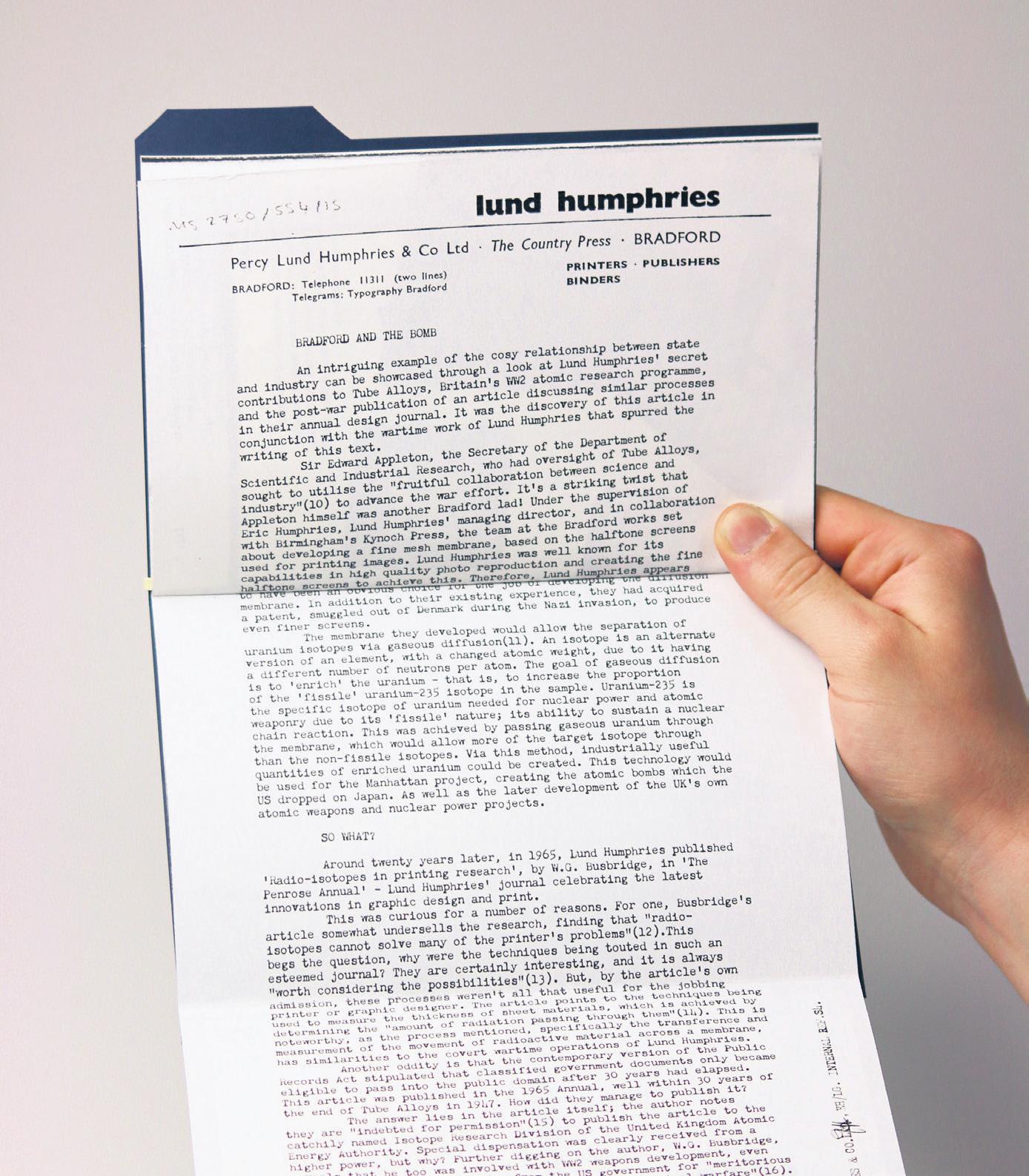
culture, Una has crafted a beautiful set of cards to show a personal story of people and family. These cards each hold archived family photographs from the early 20th century, sharing a personal history of Una’s family. Una’s project aims to shed light on Serbian history and people.
Priyanka Vaghela’s work spotlights collectors and their collections. This project began with a local collector in Glasgow who specialised in decommissioned buses. This print collection draws inspiration from the first bus in this individual’s collection. The exhibition is a selection of prints on an A0 scale and arranged to resemble the side of this beloved vintage bus. Priyanka looks at distinct characteristics; mixing and reducing colour ranges to produce a vibrant and eye-catching print catalogue.
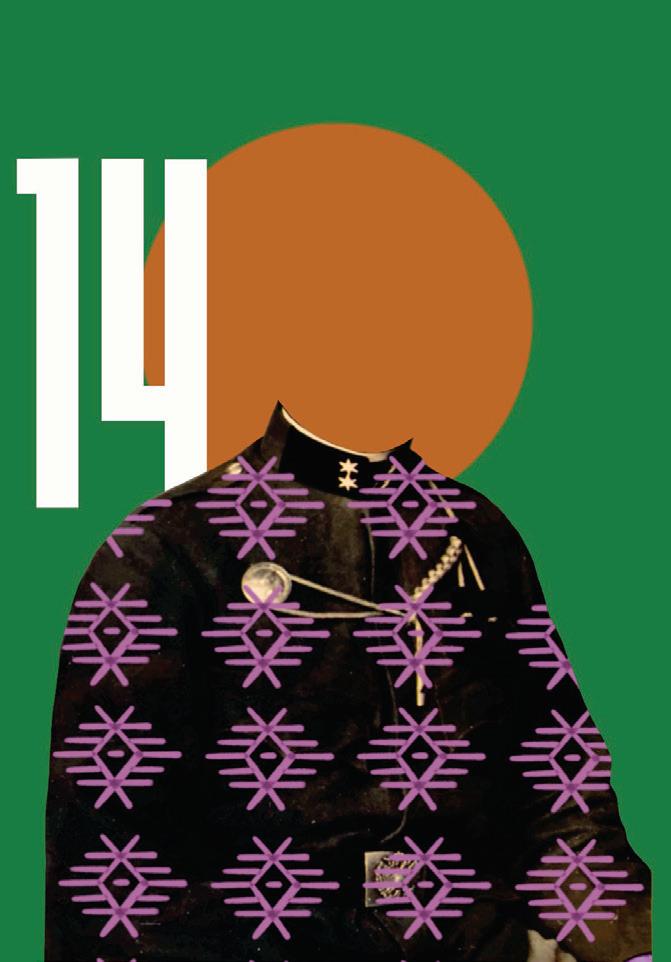

Showing that dialogue is not required to tell compelling stories, Bhavani Balasubramanyam’s Avial is a soundscape comic about a building complex in India and the many lives within its walls. Each story is told solely through diegetic and contextual sounds. The sounds of birdsong, buses and clattering keyboards become stories about cats, babies and a man working at his computer. Avial shows that stories can transcend the traditional medium of language and can tell meaningful, rich stories without uttering a word. Indian signage is traditionally handmade and painted. Deepesh Sangtani produced their project not only as a method of celebration but as a method of archiving a dying art form, and traditional design elements combine to produce limited edition prints. Handmade pinwheels accompany Deepesh’s exhibition, with each pinwheel holding within it documented designs from around India. It is a homage to the creativity and skill that goes into their creation – a tribute and celebration to the wonderfully colourful world of signs.
Work from the School of Innovation and Technology includes material product and service design, alongside experiences realised through specialist digital visualisation across medicine, games, heritage, immersive systems design and virtual reality
Words: Freya Stanley
The Immersive Systems Design programme’s studio project is self-directed. Students have the opportunity to explore two distinct pathways – 3D Modelling or Games & Virtual Reality (VR). Metal Head is a fast-paced 2D cyberpunk side-scrolling action shooter set within an 80s universe, realised in retro pixel art. Developed by Omar Said, the Metal Head demo features a short, fast-paced narrative. The game was developed alongside a custom weighted controller to enrich the play experience and provide greater immersion and feedback in VR.
As part of the 3D modelling pathway, Jaime Ojeda has designed and modelled three fantasy Dungeons and Dragons characters for his studio project, A Basic Adventure – ‘The Wizard’, ‘The Rogue’ and ‘The Barbarian’. A ‘Dark Space Marine’ is Jamie’s fourth character, designed for the programme’s VR module. The VR demo with the Marine allows users to assemble a suit of armour and inspect each piece in a virtual 3D space as they construct the armour on a mannequin. Ryan Sims, studying Games & Virtual Reality, explores the potential for filmmaking in commercial game engines. Ryan explored cinematography, lighting and sound in the Unity and Unreal engines. His studio project explored the cinematic potential of Unreal Engine which is growing in popularity in film production. As for Unity, he chose a more indie feel with MONO-NYCTO, a demo horror experience. The player must move safely through a park in the middle of the night to meet up with their friend. MONO-NYCTO strongly emphasises audio, designed to play off the fear of being alone at night. With a love of narrative and compelling stories, Ainoha Sichlidou-Hennessy uses her

passion for narrative design to discuss sensitive concepts. Using the Unity engine as an interactive storytelling device, she produced Boxed In, a game which explores a child’s experience in a hoarder’s home. Ainoha weaves a story that follows a child’s quest for a treasured toy but also delves into deeper, more complex themes of trauma and its rippling effects on family dynamics. Showing that games as a medium can explore sensitive topics and have the potential for thought-provoking narratives, Boxed In is a humble contribution to conversations about childhood trauma, hope, and the complexity of family.
Cardboard City is Sound for the Moving Image student Kyle Martin’s reflection on consumerism and homelessness. This audio-visual [AV] installation uses projection mapping to apply visuals to the sides of cardboard boxes, which begin their life as packaging for products, and once disposed of can become shelter for someone without a home. Increasingly aware of the impact of plastic on the environment and how much plastic the music industry produces through records and streaming services, Kyle explores the life span of a vinyl album. He pressed his own record which degrades slowly as it plays on a loop, with degradation emerging as the primary motif of Cardboard City
Connor Kyle’s film reel accompanies a soundscape of Japanese music. In March, he took recording equipment to Japan to document sounds to accompany his Degree Show. The national music of Japan is shown as a melting pot of several cultural and social influences. Folk music, European Classical, American Rock and Traditional Chinese music are some of the ingredients from

which Japanese sound is born, and becomes the backdrop for Connor’s exhibition.
The Product Design programme has focused on the theme of a ‘Better World’ this year, focusing on improving people’s lives and the environment through creative thinking and innovation. Ruby is Rosina Scarano’s service plan for a menstruation education aid in secondary schools. Ruby brings accessible education and open conversation about menstruation to everyone, with menstrual health not openly discussed in schools. Growing up through secondary school, Rosina felt more education is needed on menstruation and menstrual health. Ruby is designed as a month-long pop-up health facility that would tour Scottish schools, with its proposed second phase finding a permanent place somewhere in Glasgow.
Ian Bownes’ project aims to increase sustainable tourism in Bali. Tourism in Bali is an environmentally destructive industry, and Ian has produced a set of artefacts such as cups, bowls and cutlery cast from local single-use plastic waste. As a creative solution to single waste plastic with a local touch, tourists can invest in and own their own set of individual artefacts for their holiday and to keep as a memento of their trip. This process promotes closing the circular recycling loop by encouraging tourists to bring their single-use plastics to craft shops, allowing local craftspeople to bring their skill set and aesthetic to the curation of these purposeful artefacts.
School of Innovation and Technology Degree Show, Haldane Building, 31 May-9 June
As the role of art in the current climate feels both more trivial and more necessary than ever, students in the School of Fine Art’s Stow Building deal with ideas around the politics of space, memory, personal and collective history and culture
Words: Agnes Sharp and Celeste MacLeod-Brown
This Degree Show students in the School of Fine Art are looking back to the past to attempt to piece together an unstable future. Here the romantic is posed alongside the realities of our time.
Artists on the Sculpture and Environmental Art programme showcase a body of work that speaks of their experience of the ups and downs of creating, and the nature of time representing a state of flux.
Exploring the dissonance and unresolved relationship between our ‘speaking selves’ and
physical embodied selves, Joe Cameron’s meticulously crafted stop-motion animation, Island of Forgetful Folk, sings of themes of subjective experience and the constructed self through the eyes of a character whose memory is externalised in a series of notebooks that detail his past. Ancient spaces and archetypal settings function as metaphors for the external and internal self as we are invited to consider our own phenomenological experience of life.
Also considering a means of preserving memory and looking to the past, Sancia Brims creates a sonic representation of a space familiar to many locals and GSA students, offering a display that resembles a contemporary archive, reflecting on the history of the current arts and music venue The Old Hairdressers, the site where her parents once operated a salon in the 1980s and 90s. An enduring hub of energy and party culture, she constructs an interpretation of what it might once have been like.
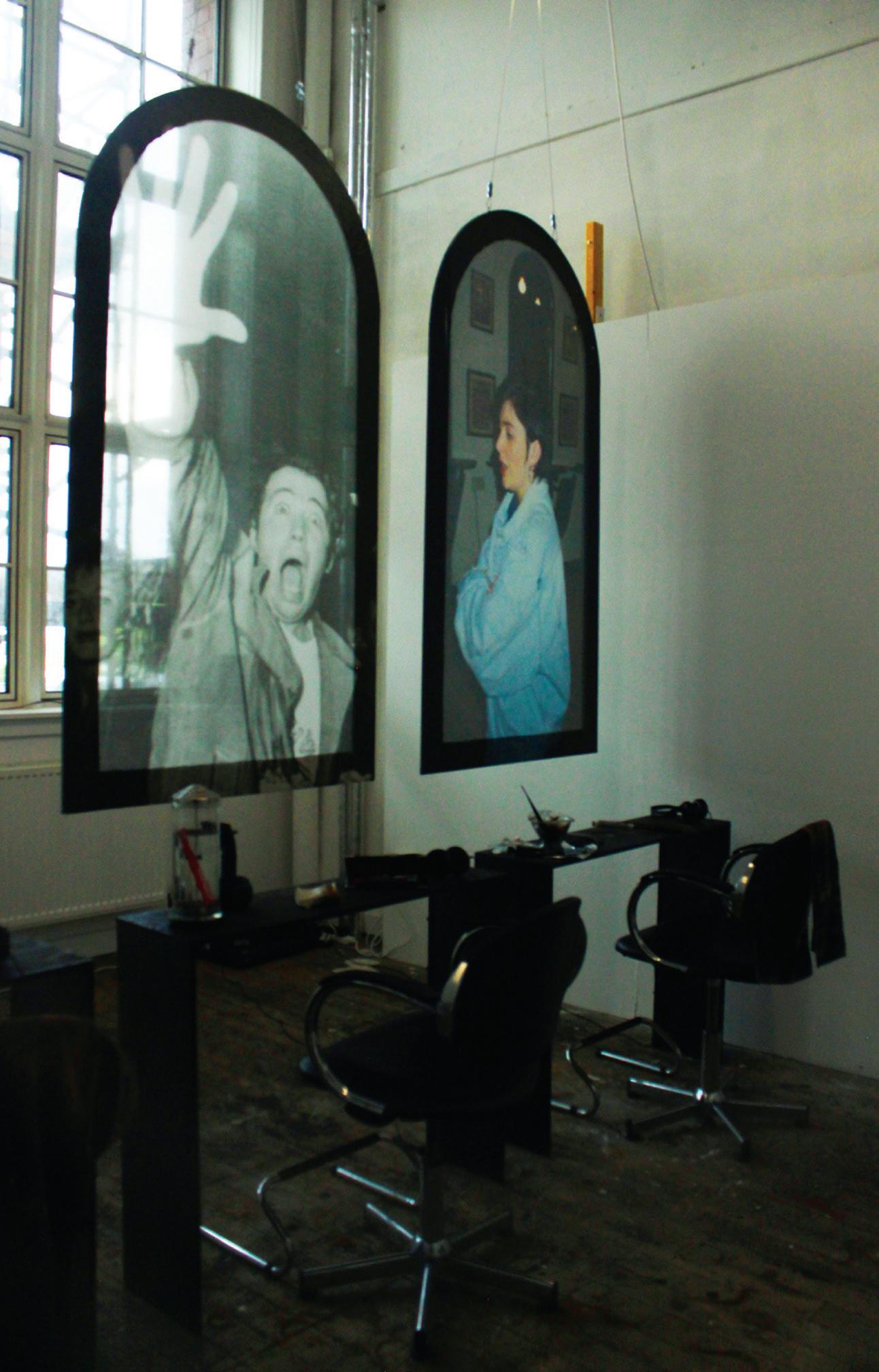
Out on the third and fourth floor landings, Mike Hill is casting a watchful eye over the Stow stairwell, with his lighthouse nodding to the inevitable passing of time with the words ‘Inspite of you it revolves’. Somewhat more serious than his past satirical approaches, Hill’s work represents an inquiry into the nature of being alive, while reminding the viewer that the work would be there even if they were not. This ‘memento mori’ acts as a second part to a statement in Hill’s earlier work: ‘The world outside is exactly how you left it, spinning uncontrollably.’
Tamsin MacArthur’s work is driven by the inevitability of failure, channelling this through a mixed-media installation that recounts (while also being made in
anticipation for) a pilgrimage to the Holy Isle in a coracle that is fated to sink. ‘Things going wrong’ are mythologised through fragments of walls and arches resembling ruins. The viewer is left to explore the space as they choose – the archway refusing its assumed function as a gateway.
Theodora Koumbouzis Maclellan’s kinetic shadow puppet installation references original beginnings (be those biblical or mythological). We are given a choice between whether to buy into the initial flattened image and experience of innocence, or the sickness of the complexity of the mechanics and the material realities of the ‘puppets’, driven incessantly by a motorised mechanism spawned from a rusted barrel. The original innocence of the romantic and theatrical is contradicted by the material – the mechanised contraptions commenting on the metronomic nature of life and history.
Laurie Knott’s feature film is a culmination of brewing ideas around the idea of success and its entwinement with creativity, starring and celebrating those that have shaped his degree in one way or another. Playing on the idea of what it is to be at art school – where one should know what one is doing – and the notion of being a director, Knott strikes a balance between romanticisation, and the poignant truth of committing to the inherent vulnerability of creating.
In Painting and Printmaking, students have been grappling with current global issues, subverted fantasy stories and archetypal cultural tropes. Eerily yet undeniably relevant, Liz McNeill’s paintings portray abstracted compositions of congestion, dissipation, and fragmented figurative elements that emerge from layers of oil, acrylic and gouache, implying something brutal and bodily. While encouraging viewers to derive their own interpretations and meanings from her works, she also addresses a central concept of moral injury, rooted in her own experiences as a cardiologist during the pandemic and AIDS crisis. This perspective informs her search for release in the present, as she addresses suffering in Gaza and considers more broadly where organisations intended to provide care often lack the necessary support from the very structures in which they operate.
Meghan Josephine’s paintings depict a type of female representation that stands apart from any recognisable environment. The works compel you to focus on the interactions between figures and the ways in which they occupy each canvas – outstretched, slouching, and feeling their way through

space. However, this is no ‘reclining nude’, and Josephine’s work arises from an exploration of women’s representation, influenced by her experiences in America during the reversal of Roe v Wade.
Inhabiting a fantasy world in the darker and lighter senses of the word, Iona Jones’ kinetic sculptures delve into the seductive darkness of fairytales, her irreverent and witty use of materials reminiscent of child-like experimentation. The viewer’s suspension of belief is exercised as she depicts surreal moments of animal transformation and fragments of stories. Fairytales are seen to be a lens through which to moralise the world, as much now as in childhood. A caged swan bleeds five litres of blood throughout the show; a wolf-dog-man’s head, mounted to the wall, dribbles into a dog bowl – all is wonderfully and bombastically unexpected. A more sombre exploration of fantasy comes into play in Eve Wilbraham's emotionally impactful, thoughtful large-scale paintings. Intimations of the elusive character of Pierrot surface on the canvas, through a playful and soulful use of texture, his collar seemingly floating in the space. The romantic is posed alongside the melancholic, courageously forging paths of light across the surface, alluding to Pierrot’s intrinsic relationship with light. Textural qualities across the works feed into each other as much here as when the works were being created side by side within the space. Similarly exploring the boundless qualities of paint, working reflexively between painting and analogue polaroid photography, Lucas Allan imitates specific tonal qualities in a mixture of oil, acrylic and airbrush. Apparitional forms appear shimmering on the surface as the viewer anchors on an enigmatic yet familiar form that slowly and hazily emerges.
Drawing together the similarities between self care and improvement and domestic labour, Ruby Stewart’s love seat-come-gym bench-comeironing board-come-gossip chair invites you to sit (or lie) within the space. Head-to-head, you are given, with another, the nesting space to have an intimate conversation, surrounded by imagery that would usually lend itself to capitalist structures, but instead serves as a subversive antidote to the isolation of gym culture.
This year the Fine Art Photography programme Degree Show deals with the politics of space and cultural identities, as well as notions of their ownership.
Maya Schønning Kjærulff’s digital weavings present us with scenes depicting an unseen process of removal. A series of rooms that once
contained people, all derived from digital sources, evoke questions of private and public space. The works explore the boundary between what viewers can see and what remains hidden, a theme reflected in the increasing abstraction of each image as one gets closer. Through a digitally produced process, the artist examines algorithms and the removal of information, resulting in works that are both sensitive and intimate.
Similarly, toeing the line between private and public, Matilda Reid’s monochromatic etchings and screenprints on glass and steel depict window views taken from porn sites. Questions of ownership are raised - framed from her window through a stranger's, the window fuctioning as a liminal divider between the exhibitionist 'being seen', and the voyueristic 'seeing in'. The glass prints speak of the fragility of the image and the situation, further encroaching on the private. Two monitors sit facing each other recounting intimate yet universal silent conversations between the wellacquainted and well-accustomed, the contents of which becomes slowly identifiable through their gestures.
Mia Gwenllian shows a series of suspensions, some sculptural, composed of found objects, threads, and two-tone cyanotypes with hints of ancient Welsh language. These elements evoke themes of personal and collective grief, exploring the loss of cultural inheritance, with her installation also including a large silk fabric print, dyed with tea and colour prints mounted on reclaimed wood, arranged dynamically on the wall.
Gwenllian’s work presents a unique narrative that entwines past and present.
Primal ancestral heritage is poetically delved into by Freya Cookson. Spawning from a moment where she was struck with a gut reaction of fear, and a sense of the passage of time, while entering a cave in an Aberdeenshire town connected to her maternal family, Cookson displays a series of large format negative prints of the site. Mother
speaks of time immemorial, belonging, personal roots and seeking geological belonging. One photo depicts a visit to a neolithic stone with her mother and her mother, finding solace in the permanence of stone, and how geological features have shaped people and cultures.
Brogan Vandenio‘s highly ambitious period feature-length film is an idiosyncratic ode to his working class family and upbringing. Vandenio’s work seeks to pursue a truth within his identity, drawing primarily on the relationship of brotherhood (his brother Riley Anderson plays the lead) and explores the idea of a child coming to terms with the reality of his family and origins. Using his own archive footage of a period spent in Venice before the concept of the film had fully germinated and a fictionalised home in Scotland, thanks to an eclectic bunch of friends it is a celebration of his time spent film-making.
School of Fine Art Degree Show, Stow Building, 31 May-9 June
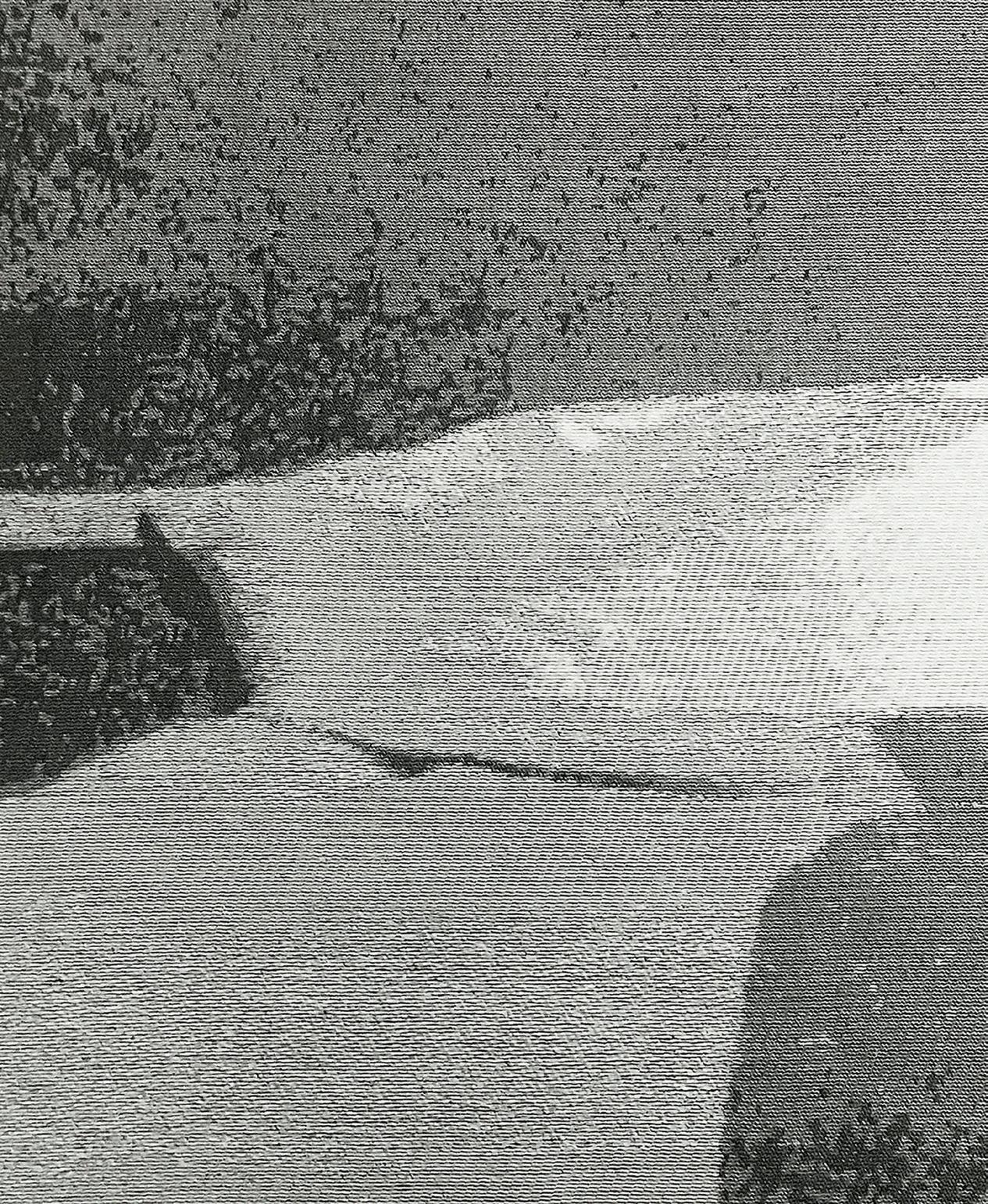
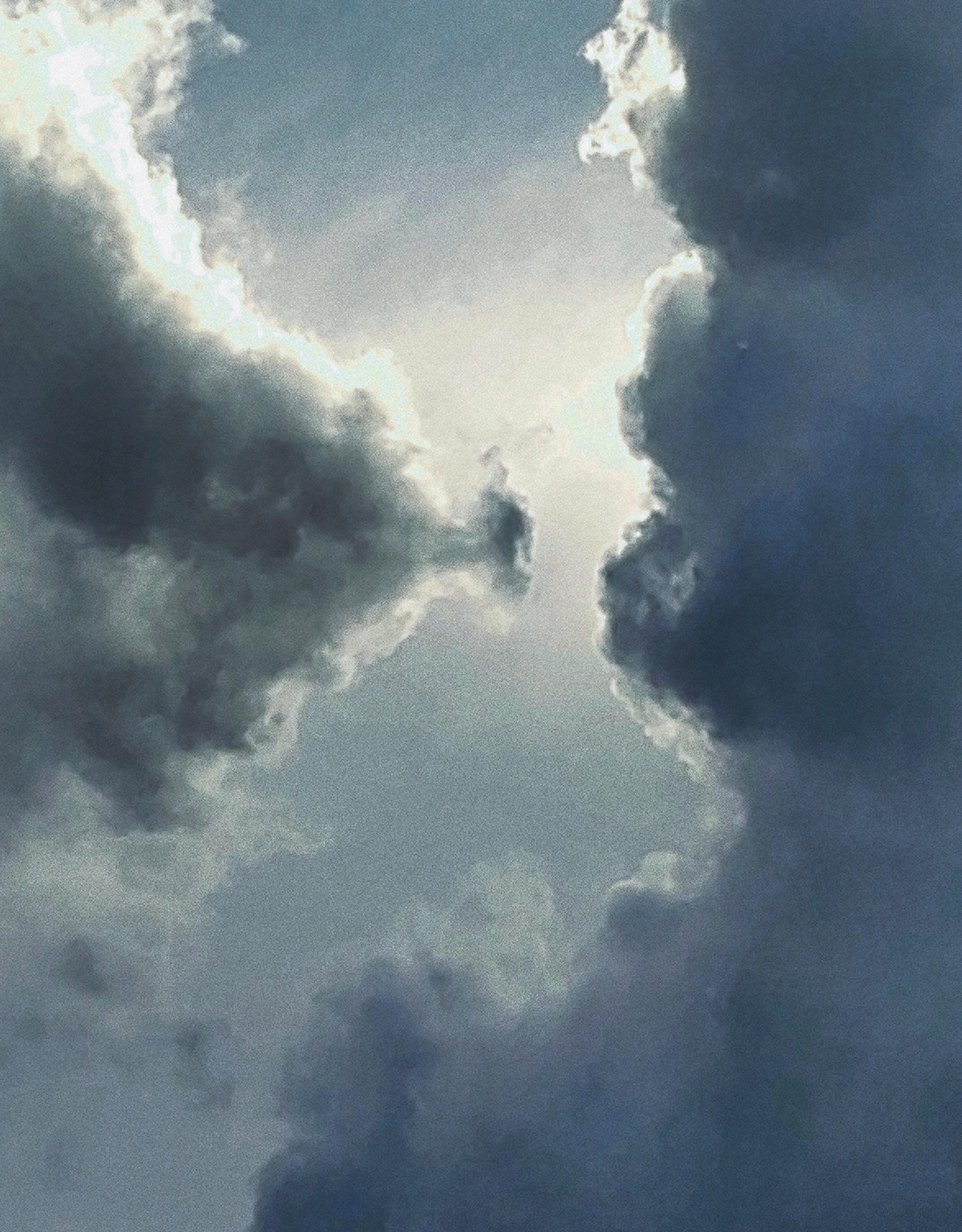


Flirting with world-building, modern media, and digital encounters, artists on the MFA are forging depictions of a climate that they recognise as fruitful yet corrupt with imagery and inspiration
Words: Agnes Sharp and Celeste Macleod-BrownThe approaches of Master of Fine Art graduates are varied as ever, yet there is an undeniable vibrancy and an air of refined playfulness across the works on show, signalling the quality of critical thought and material enquiry that has taken place behind the scenes. The building has been brought to life by these artists, as they continue to develop their maturing practices, many continuing bodies of work that have been ongoing for years.
Derived from his own creative writing processes, informed by Scottish literary theory, Chris Farrell paints scenes that present as both fragmented and immersive at once. Farrell’s display consists of four paintings and a film, tucked away beneath a gazebo, with each component being formed around a fictive music festival fabricated by the artist. Considering theories such as Caledonian Antisyzygy (which refers to the idea of duelling polarities within the same entity, applied to the Scottish psyche and literature), Farrell’s writing is the first step in the process that leads him to collect images from various digital sources and to collage then paint environments that, despite their seemingly disparate contents, render
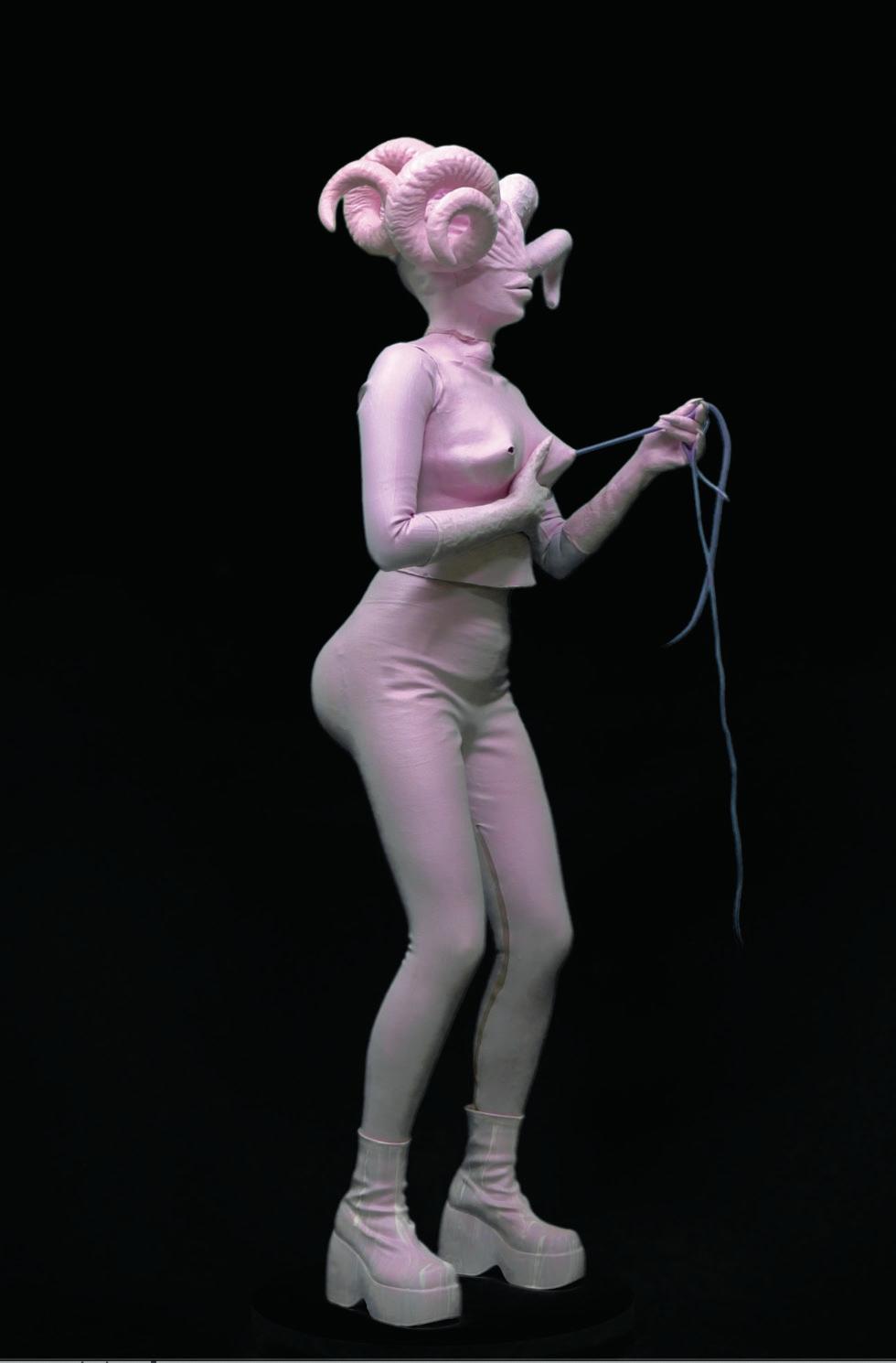
each component as far from incongruous. The works ring true to the experiences of any Scottish music festival, with the familiar imagery rendering something humorous yet slightly unnerving.
Holly O’Brien constructs a hybrid between the mythological and the digital, through an installation of projected video works that depict the artist in costumes, including two full-body latex pieces. The videos exude something reminiscent of avatars occupying the loading screen of a video game and feel simultaneously alive yet artificial. O’Brien allows an extended visual language to be absorbed into the body of work, blending imagery from a variety of platforms that might play a role in the forming of a new collective unconsciousness, such as social media, pornography, and video games. O’Brien’s work continues upstairs, directly above the videos, with a vibrant and gelatinous installation which appears to seep through the floorboards and into the space below.

Also working in the gap between various forms of media, Cora Weiss’s work Tempo manifests as a rhythmic and curatorially engaged dispersal of imagery, derived from media consumed by the artist. Considering the mass influx of imagery we are met with daily, Weiss is attentive to placement, seeking to map out hierarchies and inequalities between images, considering the time spent engaging with what we see.
Neighbouring Weiss’s work are Louise Campion’s vibrant oil paintings, which portray her exploration of the corporate world through a somewhat subverted aesthetic, reflecting what she calls the “attractive value of greed.” Campion’s work is dominated by imagery that evokes ideas of positions of power within corporate contexts, exploring the pedestals on which we place figures of authority. Elements of homoeroticism arise in the work, and the underlying sense of beauty lends the paintings a strong aesthetic quality which displays a striking dichotomy with the expected dryness of a corporate aesthetic. Overall the work challenges and reframes our perceptions of power and success in corporate environments, through an unexpected relationship between subject matter and visual language.
Aaron Alexander Smyth’s flaming flowers that brightly blaze and a way a lone a last a loved a long is an interdisciplinary work that explores how our experience is visually coded within systems of power. Narrating a personal ceremonial journey through imagery, Smyth intertwines his experience with the broader sociohistorical relationship with the transcendental – grief and absence are portrayed as markings we carry with us through life.
Zeena Wright-Al Tai has staged a dramatised retelling of an episode of psychosis, forging a world that sits on the cusp of something haunting yet beautiful, troubling yet intriguing. The artist approaches the idea of an immersive environment in a different way, inviting the viewer to peer into a sewn tent that contains a set that might be from a shadow puppet theatre. A motorised ring of trees and fluttering moths form the body of the work, enticing the viewer. Adding to its atmospheric nature, these elements are accompanied by a soundscape by sound engineer (Olli) Olivier Jean Julien, featuring harp by Dara Watson. The entwining of textilebased and sculptural elements contribute to a unique experience, as the viewer is both immersed in the work and an onlooker on a depiction of mental illness that is often stigmatised.
With their Degree Show taking place across the industrial interior of the Glue Factory, this year’s MFA graduates have presented an exhibition of work that seeps its way into every facet of the imagination.
Master of Fine Art, Glue Factory, 30 May-9 June
Open Studio Summer Courses
The Glasgow School of Art, throughout Jun, Jul and Aug
The Glasgow School of Art’s Open Studio returns this summer with short courses in a wide range of disciplines for adults and young people. Courses for young creatives which run in week-long blocks in June, July and August are perfect as an activity for young people interested in developing their creative skills during the summer holidays, and are bookable now. gsa.ac.uk/openstudio
From summer courses to exhibitions, here’s a look at what’s coming up at the GSA in the next few months
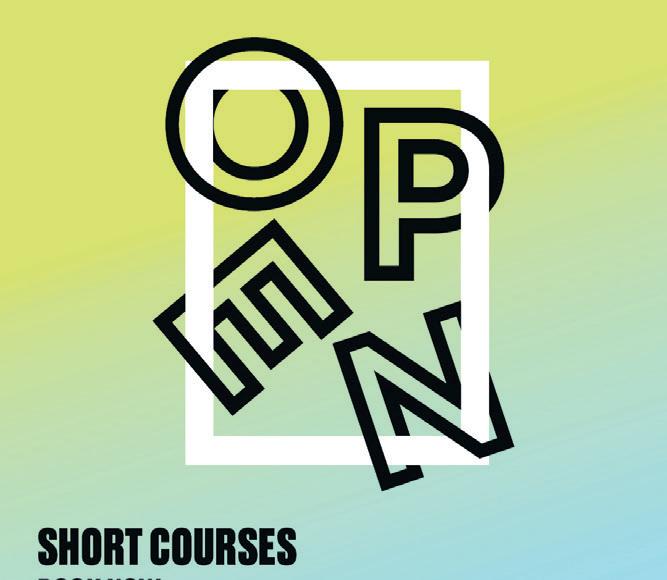
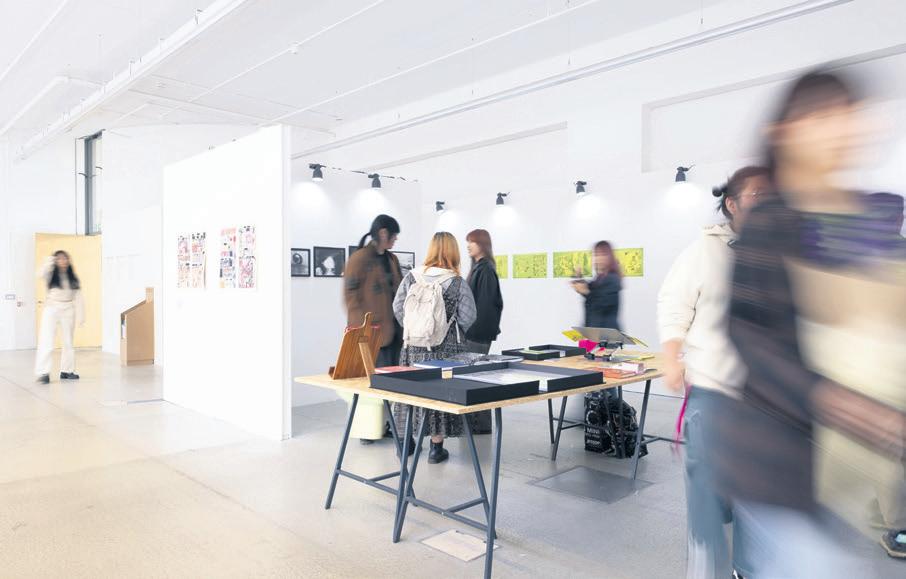
Open Studio Summer Exhibition
Fleming House, 134 Renfrew Street, Glasgow, 31 May-9 Jun
Running as part of the annual Degree Show, this platforms work made by young people in Scotland, showcasing original work from our Widening Participation pupils, the Community Engagement creative residency at Garnetbank Primary School and Castlehead ‘school for creativity’.

Portfolio Preparation –Creative Practices Course
Aug 2024-Feb 2025
Are you thinking of applying to art school? The GSA’s Portfolio Preparation Course gives you the time and space to develop your portfolio in a collaborative, dynamic studio environment. The course is structured to help you choose a specialist area of art and design to study, and has a track record of getting students places at top art schools across the UK.
gsa.ac.uk/undergraduate-degrees/portfolio-preparation

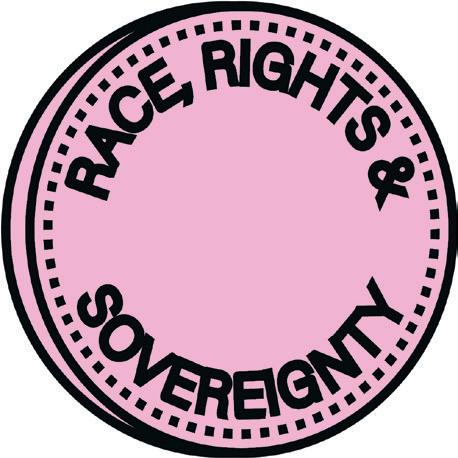
Events run throughout the year
The Students’ Association and GSA Exhibitions curate this public event series, exploring the relationship between race, place and creative practice. Events in the last year have included public lectures, events and performances with Mindy Seu & Shu Lea Cheang, Alain Kassanda, Jemma Desai & Nehad Khader as well as workshops with Rosalie Yu, Martha Adonai Williams and Hussein Mitha. Race, Rights and Sovereignty is currently programmed by artist, curator and researcher Beulah Ezeugo.
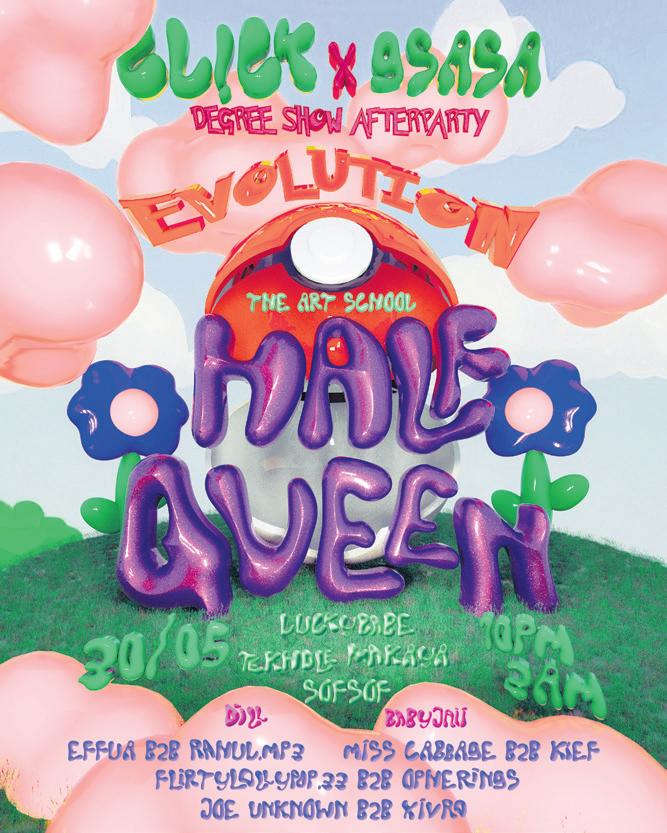
GSA OPEN Glasgow and online throughout the year
Whether you’re just starting to consider coming to art school, or you’re almost ready to hit ‘send’ on your application, GSA OPEN offers events to support you at whatever stage you are at of your application journey. Find out more on the GSA website.
Postgraduate Degree Show 2024 30 Aug-8 Sep
Hot on the heels of the summer Degree Show, the Postgraduate Degree Show showcases the work of students on postgraduate programmes across the school. From fashion collections to innovative service design andmedical visualisation to painting and sculpture, this is your chance to explore the rich work of our students on many of our postgraduate programes. gsapostgradshowcase.net
CL!CK X GSASA PRESENT – EVOLUTION ⭐ GSASA Degree Show After Party GSA Students’ Association, Glasgow, 30 May, 10pm-2am IT’S A CELEBRATION ALRIGHT SWEETIE?
Join GSASA as they celebrate the mother tucking Degree Show. The theme is giving Pokémon… EVOLUTION if you will. Come as your favourite Pokémon or just as someone who has travelled through the realms of the Crimson Mirelands. For the evening they have a three-floor takeover in the Assembly Hall and The Vic, hosting a roster of DJs and performers, headlined by DJ, event producer and curator HALFQUEEN.
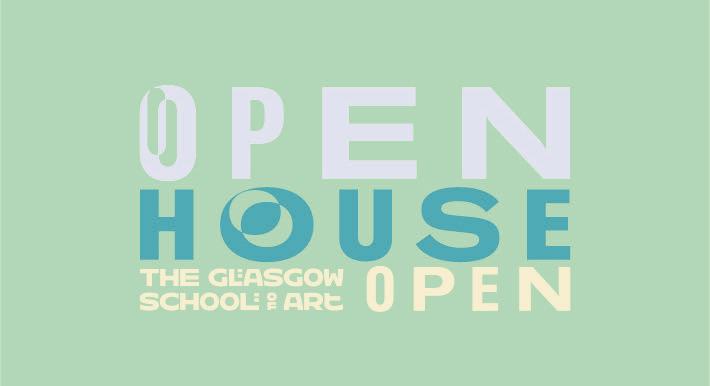
GSA Open House 25 & 26 Oct
At Open House, our studios and workshops are opened up for prospective students interested in studying at The Glasgow School of Art at undergraduate or postgraduate level, to explore and find out more about life and study here. You’ll get a chance to meet our staff and students, explore the campus, and get to know more about the programmes you are interested in studying through events and activities.
Sandra George Part of Glasgow International 5 Florence Street, Glasgow, 7-23 Jun
This exhibition will explore the work of community worker and photographer, Sandra George (1957-2013), who took thousands of images of community projects across Scotland between the 1980s and the late 2000s. Social justice and equity was at the heart of both George’s community and her artistic work, which was not exhibited during her lifetime. This solo exhibition, developed in collaboration with Craigmillar Now, presents George’s photography and a selection from her wider artistic multidisciplinary practice.
An Evening for Sandra George Part of Glasgow International 5 Florence Street, Glasgow, 13 Jun, 6pm
Delve into Sandra George’s profound impact on Scotland’s artistic landscape through a panel discussion led by esteemed hosts Christian Noelle Charles, Zoe Lorimer, and Titilayo Farukuoye. Gain insights into Sandra’s work and participatory practice, exploring the intersections of art and community engagement. Engage in a reflective dialogue on the experiences of living as Black women in Scotland and the pivotal role of community in navigating challenges and fostering resilience.
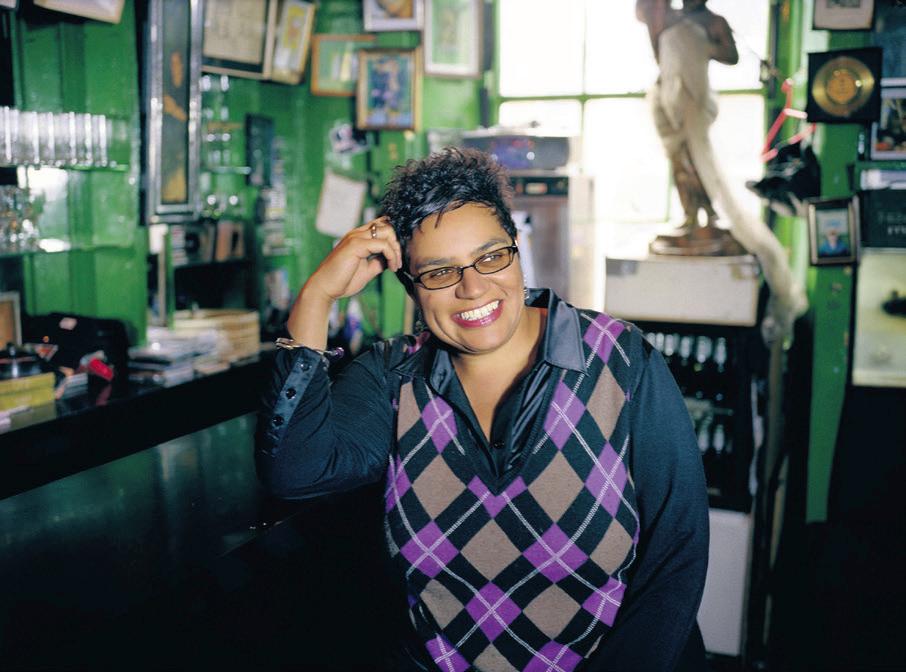
The First Annual Maud Sulter Lecture with Jackie Kay Part of Glasgow International Reid Lecture Theatre, The Glasgow School of Art, 20 Jun, 3pm Delivered by Scottish poet, playwright and novelist Jackie Kay, this event aims to amplify the legacy of artist Maud Sulter, her roots in Scotland, and the internationalism of her practice as an artist, photographer, writer, poet, curator, and organiser. From the mid-1980s until she died in 2008, Maud strove to place Black women at the centre of an art history that had excluded them. She also challenged Western art, denouncing the erasure faced by the African diaspora.
Eddie Stewart and Stephanie Smith
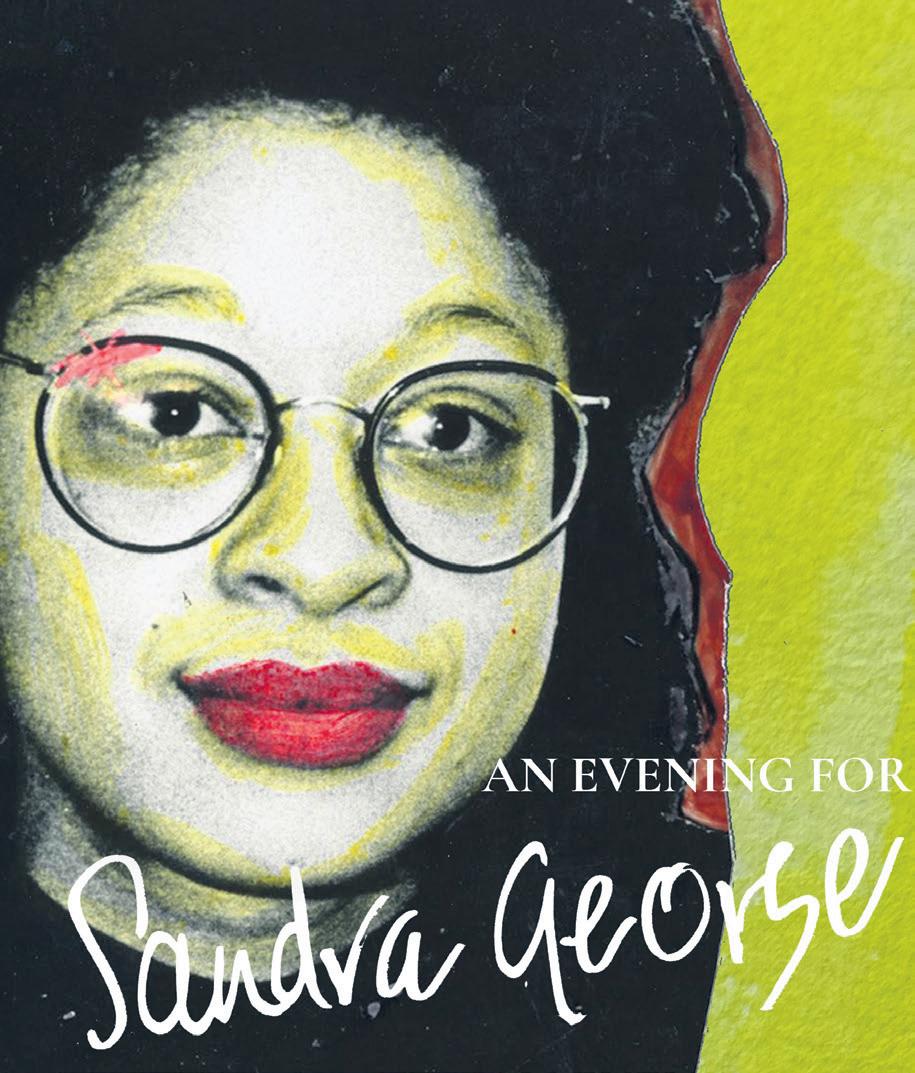


Reid Gallery, The Glasgow School of Art, 21 Sep-19 Oct
The new academic year starts at The Glasgow School of Art with an exhibition from artists and long-time collaborators Stephanie Smith and Eddie Stewart, aka SMITH/STEWART. Their practice explores collaboration, trust, relationships and communication. Using film, video and sound, they make events and performances as well as objects and installations, with a primary emphasis on the body and the implication of the viewer.
‘Ah, Sugar’, Marlene Smith. Collaboration with Cubitt, and Cubitt Fellow Seán Elder
Reid Gallery, The Glasgow School of Art, 2 Nov-14 Dec
An exhibition of work by artist and curator Marlene Smith, curated by Seán Elder (MLitt Curatorial Practice). This solo exhibition will include new sculptural and drawing work, emerging from the artist’s ongoing interest in the material and bodily qualities of sculptural practice and inquiries into the cyclical nature of social histories and familial entanglements.
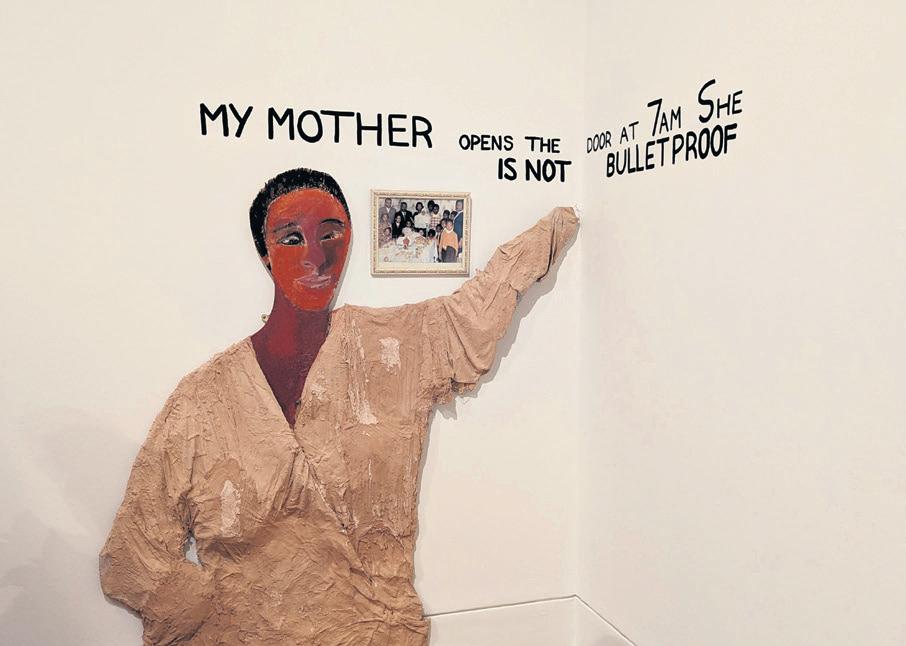
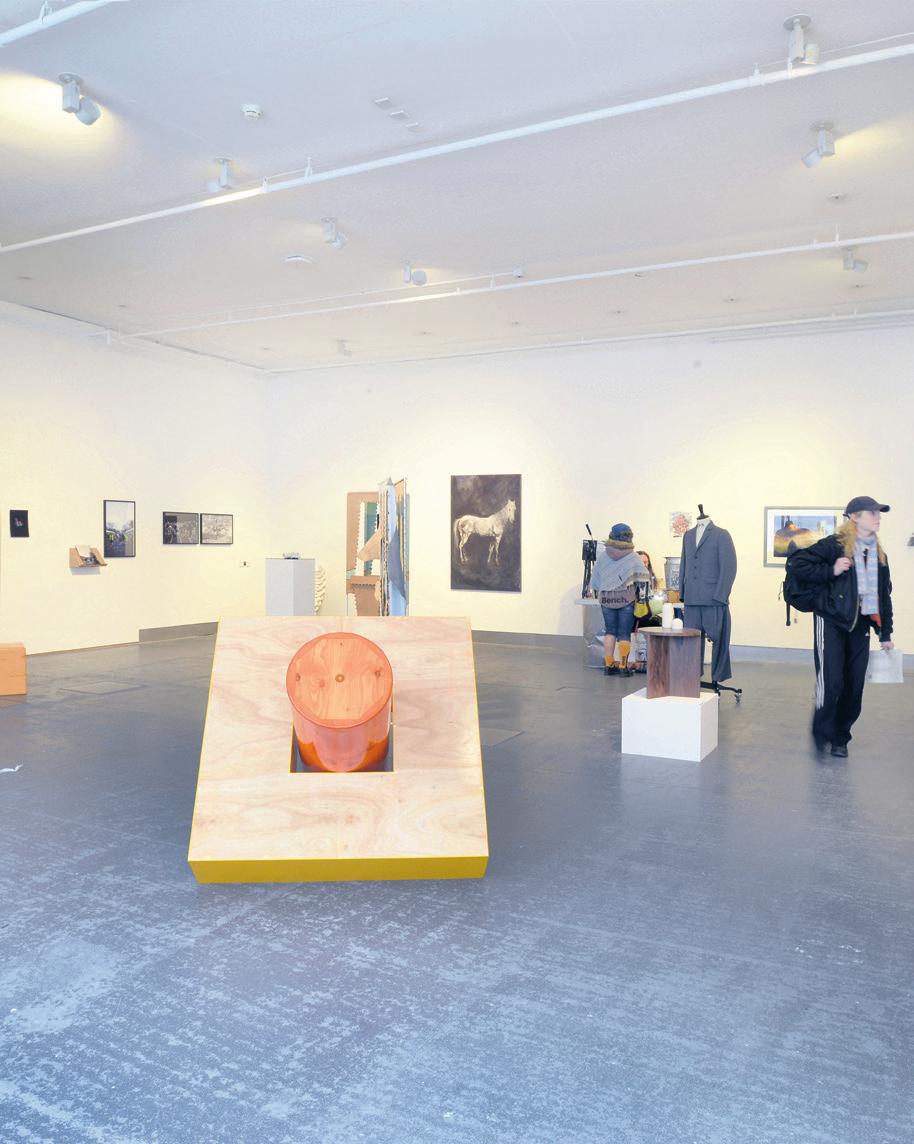
Bet Low Centenary, in partnership with Pier Art Centre, Orkney
Reid Gallery, The Glasgow School of Art, 11 Jan-8 Feb 2025
This exhibition will reflect on Bet Low’s working life, from early studies of Glasgow to the late Orkney landscapes and goes some way in reassessing this important artist’s contribution to Scottish art and culture.
GSA Highlands & Islands Summer Show
GSA Altyre Campus, Moray, 15 Jun, 10am-4pm
An exhibition showcasing our work and generating future opportunities for collaboration across the region in learning, research and knowledge exchange.
